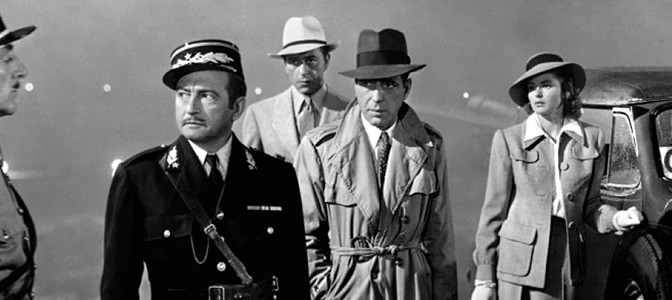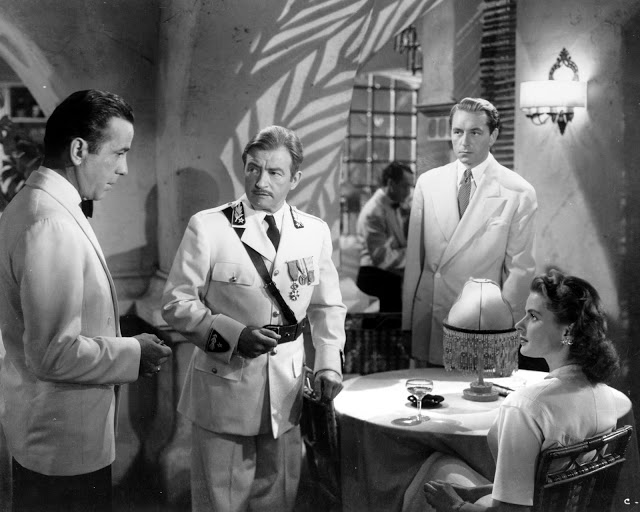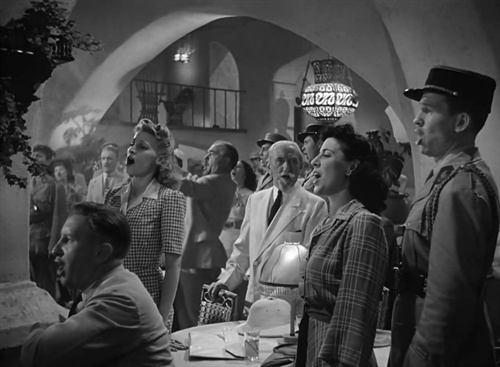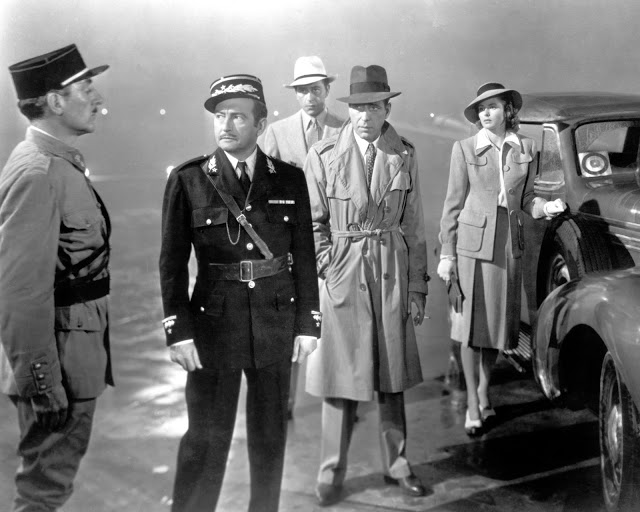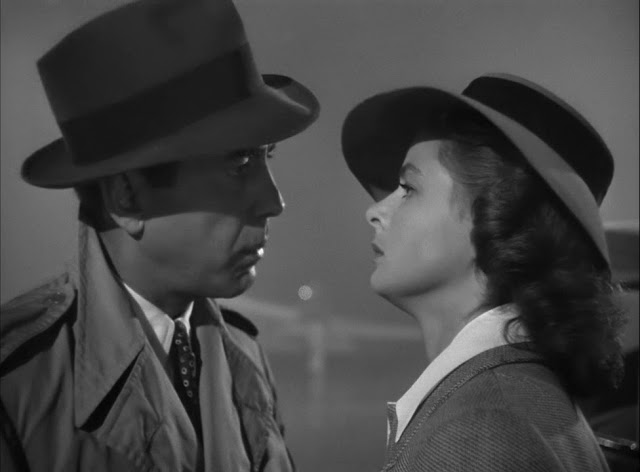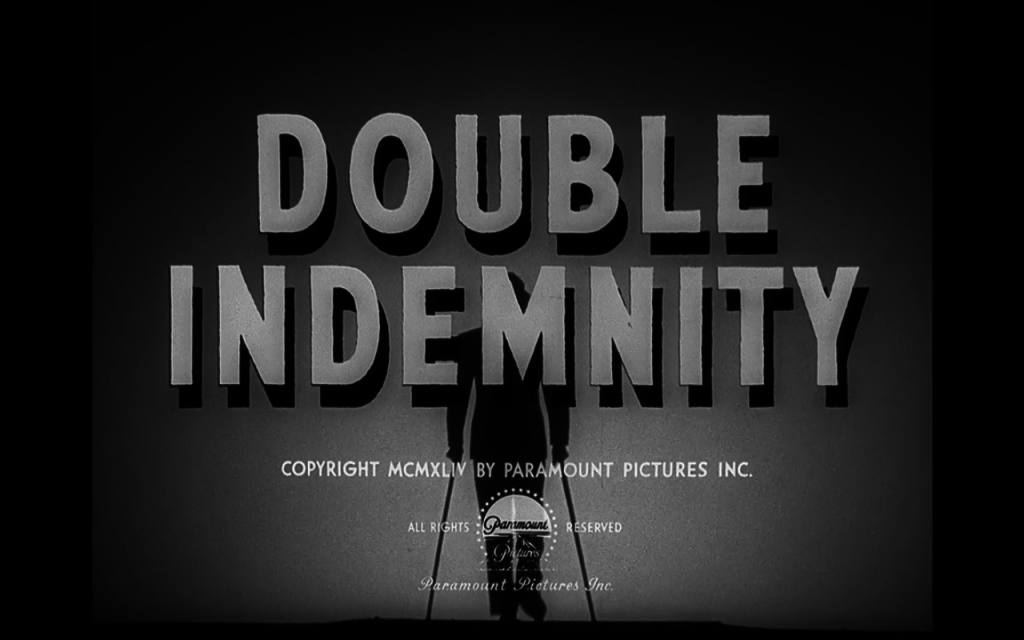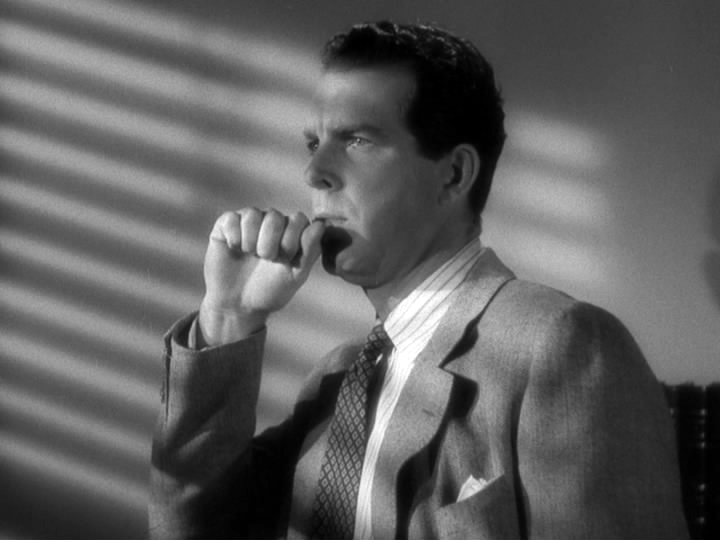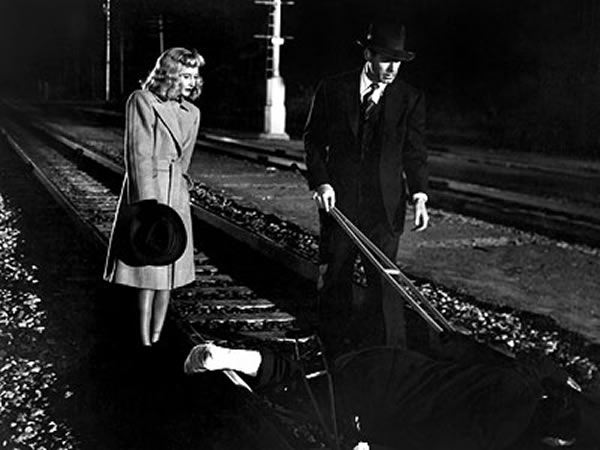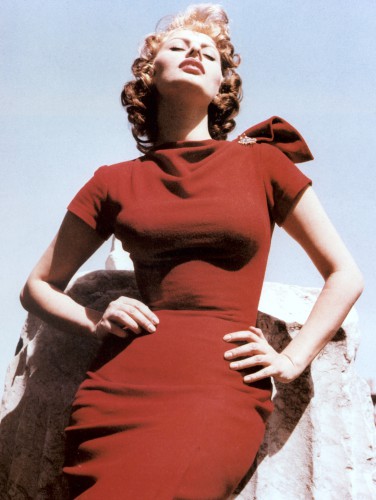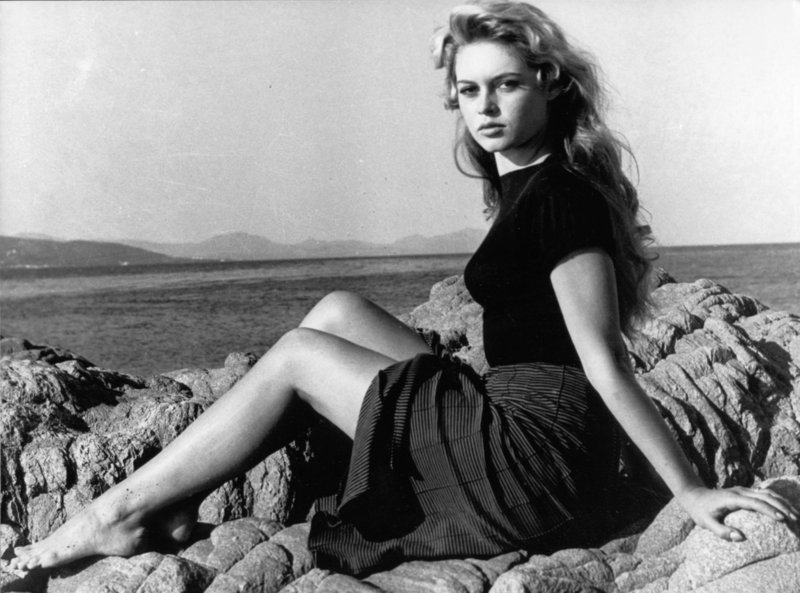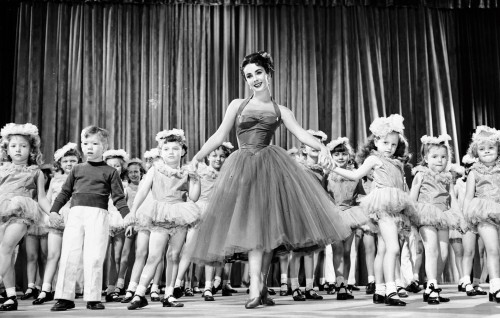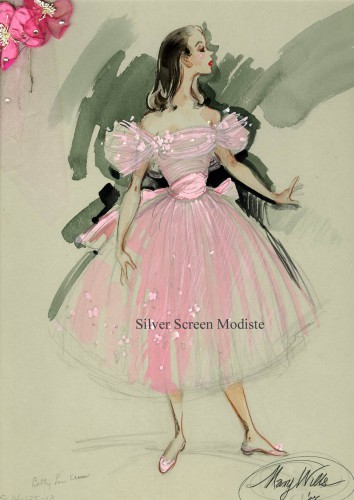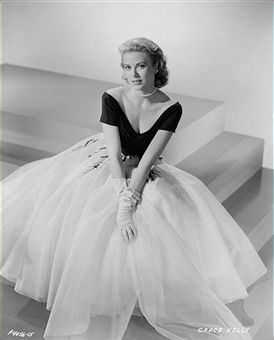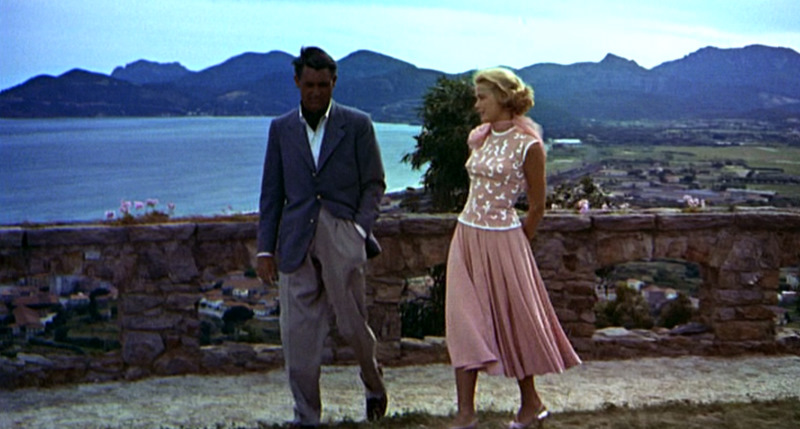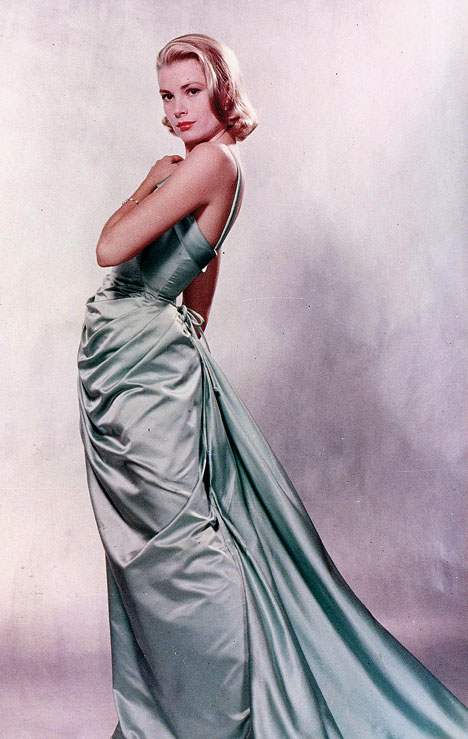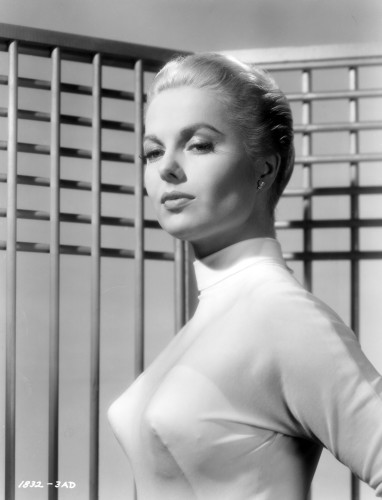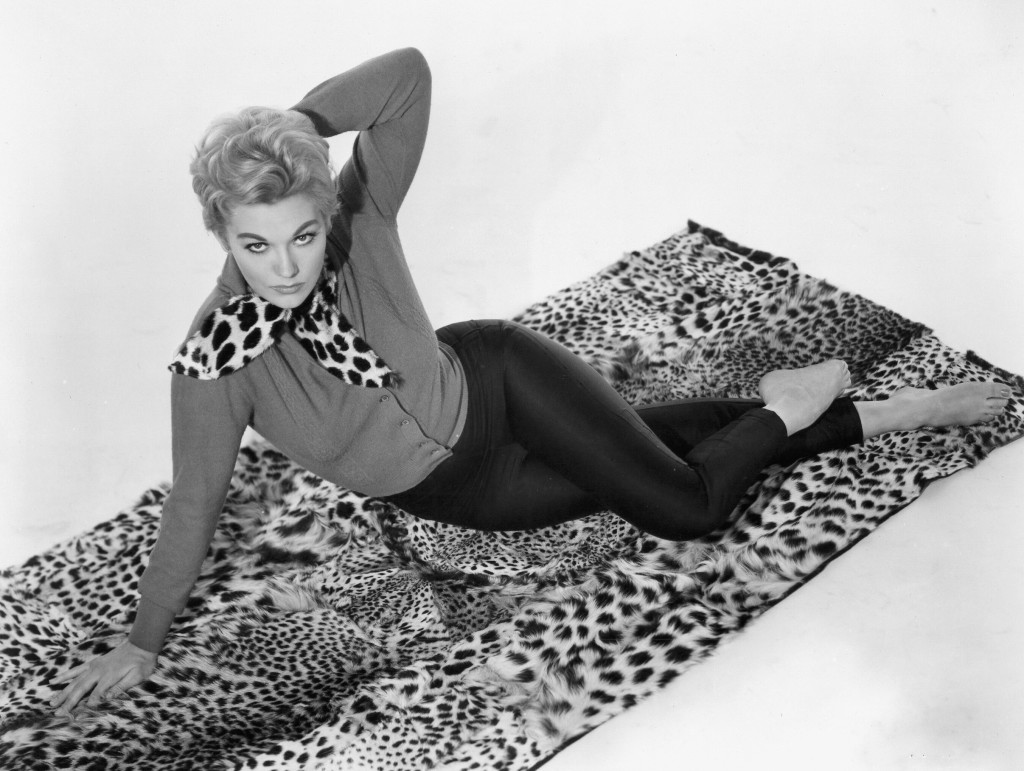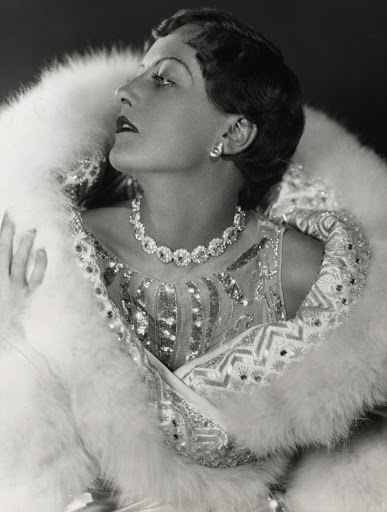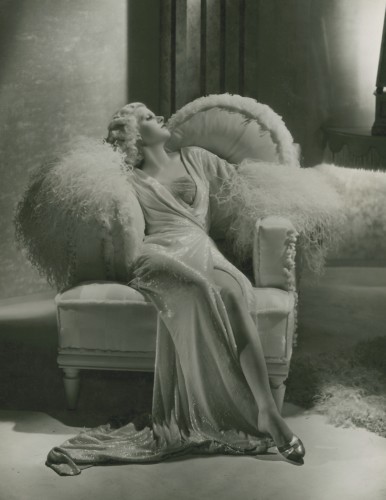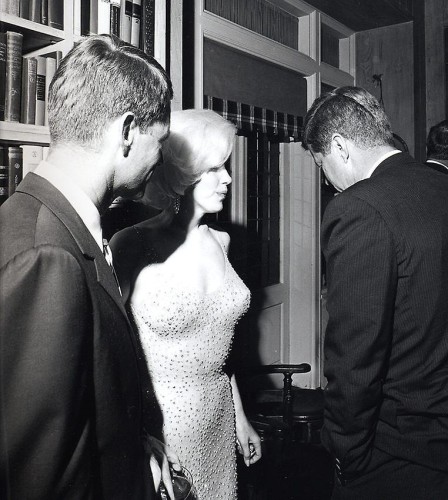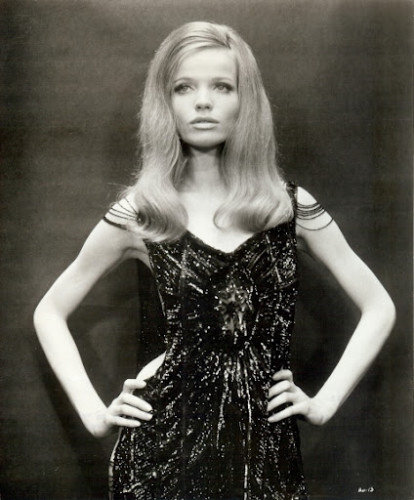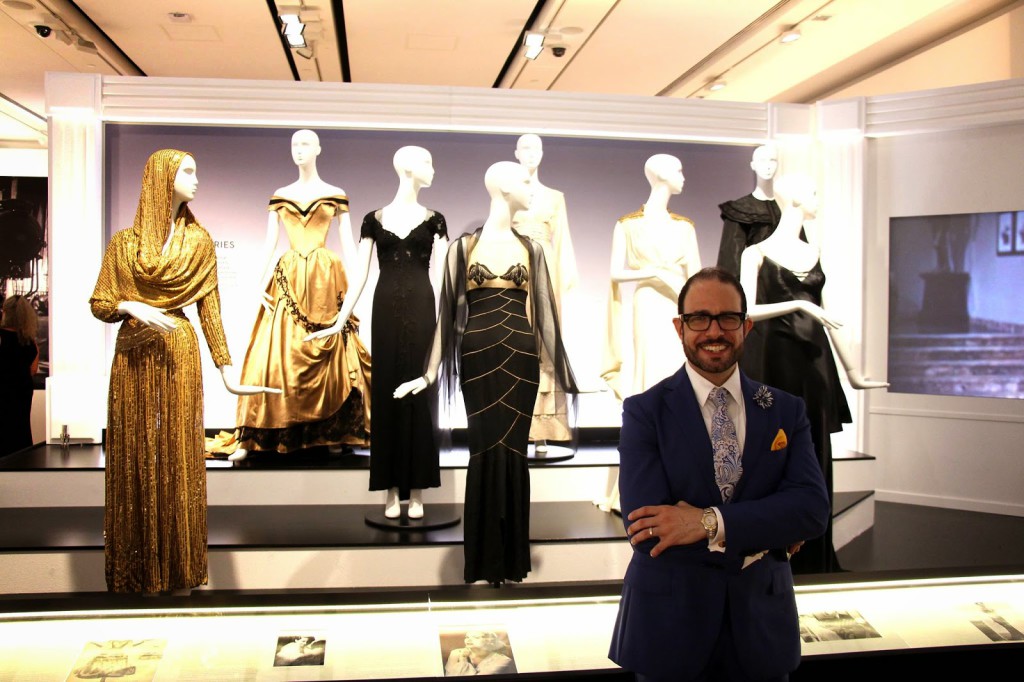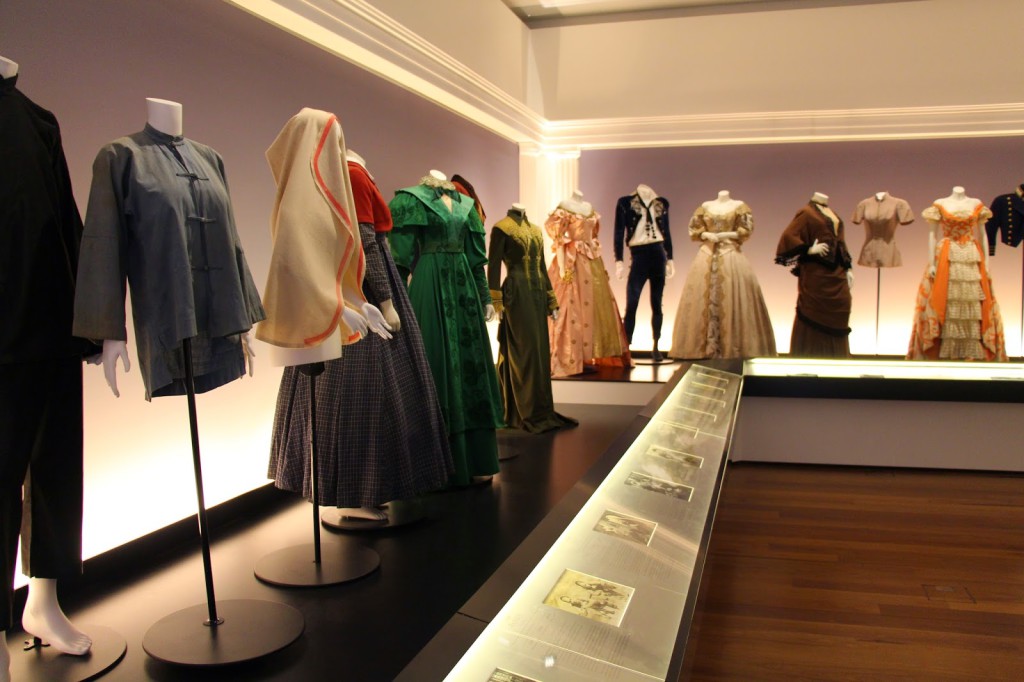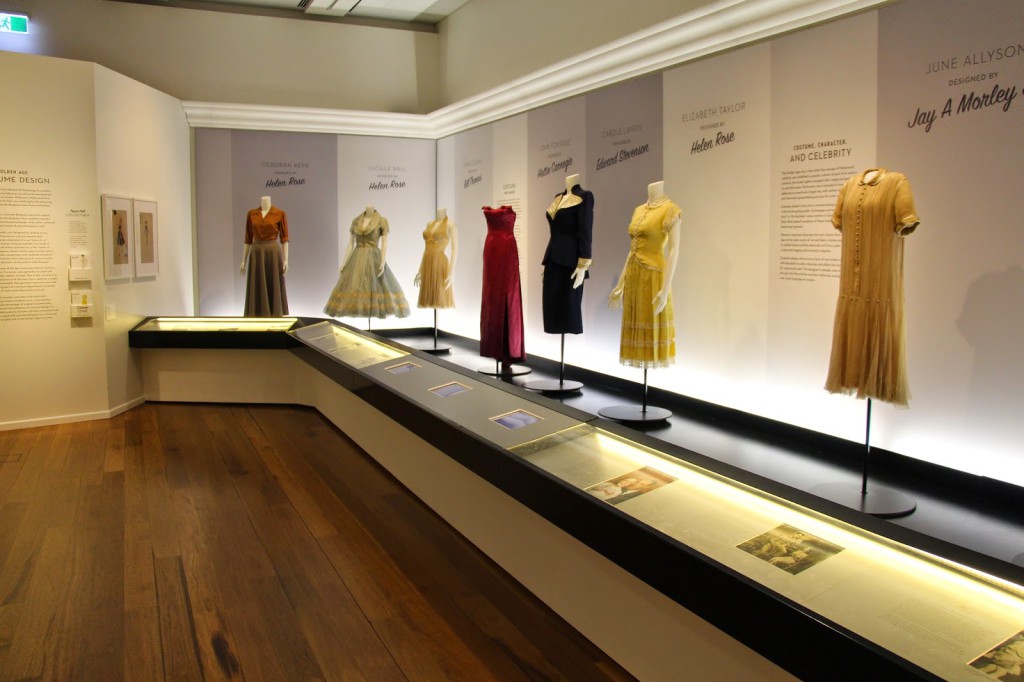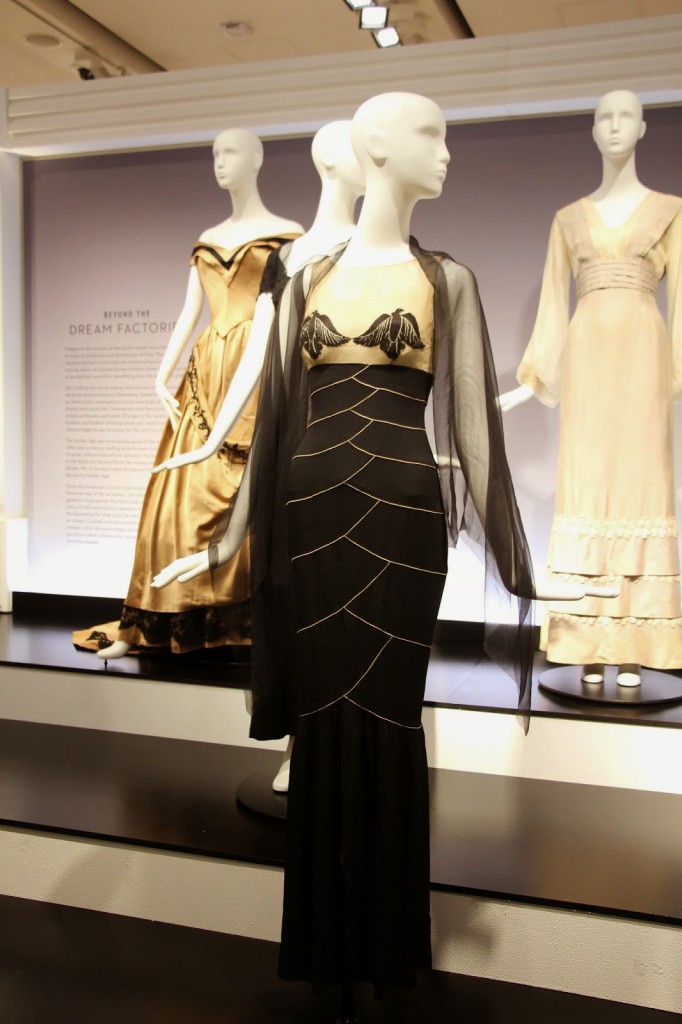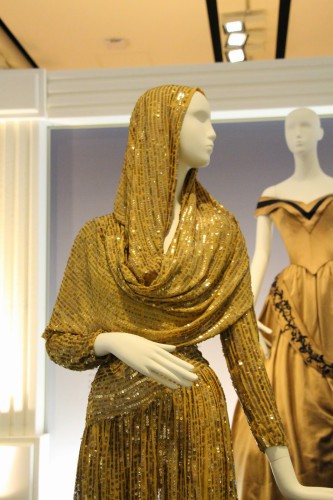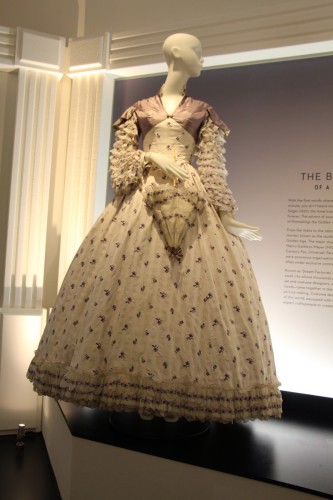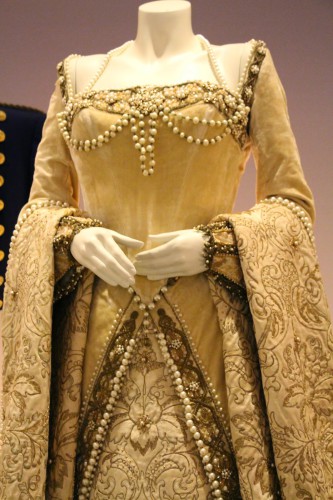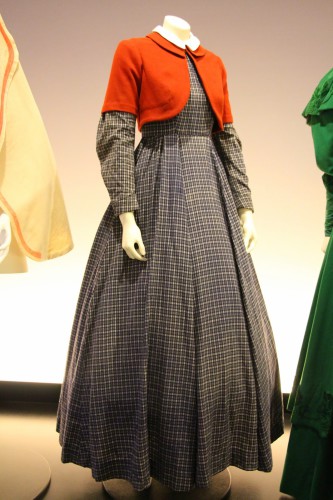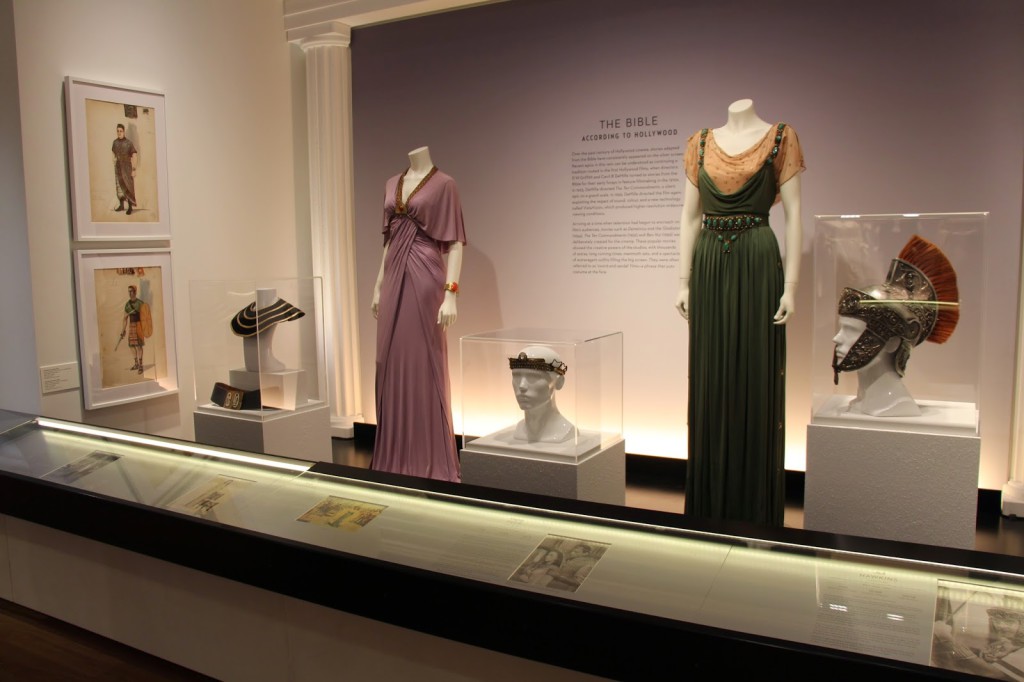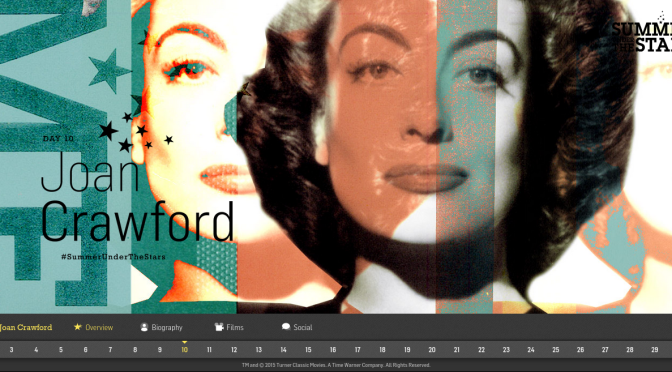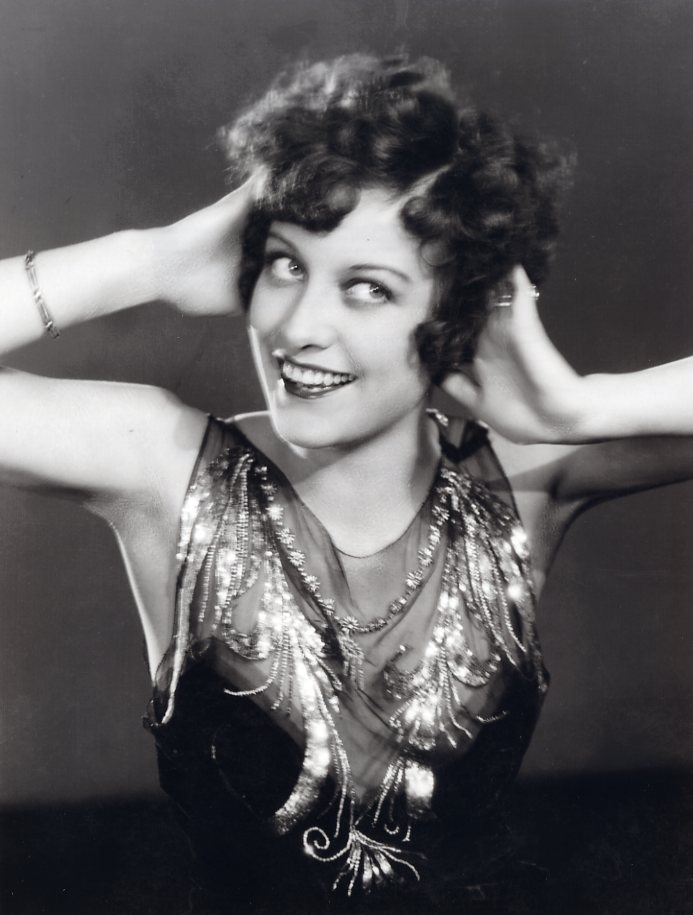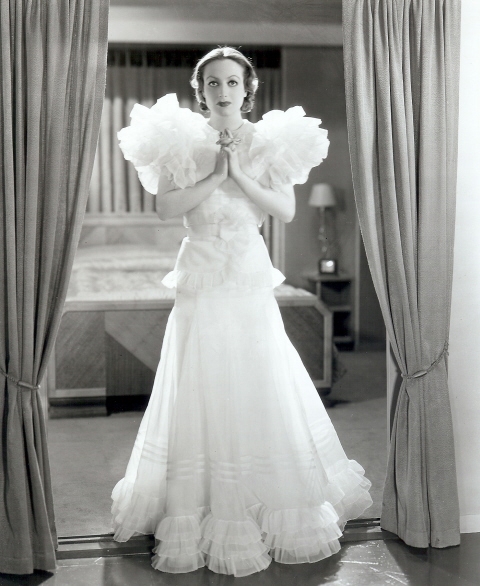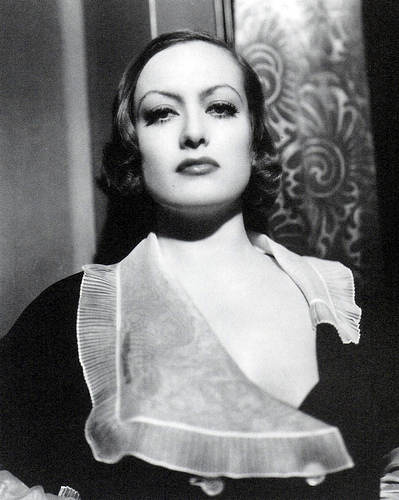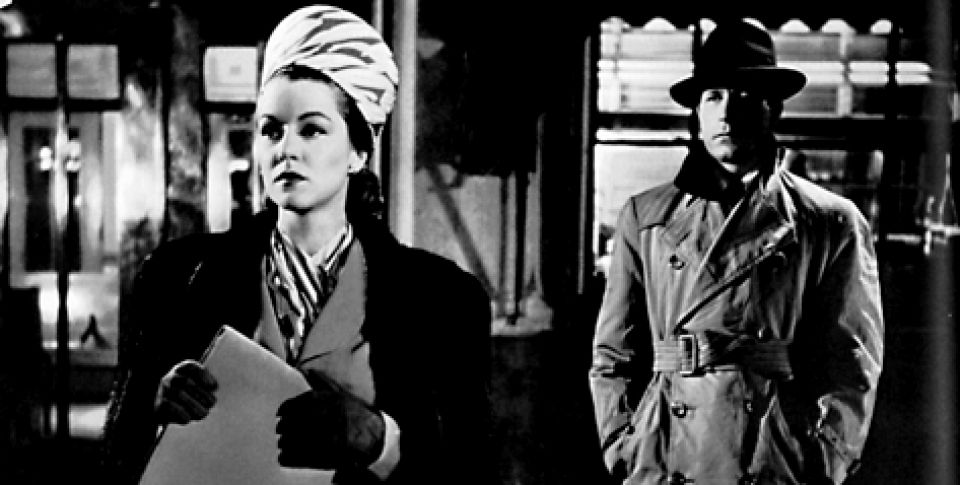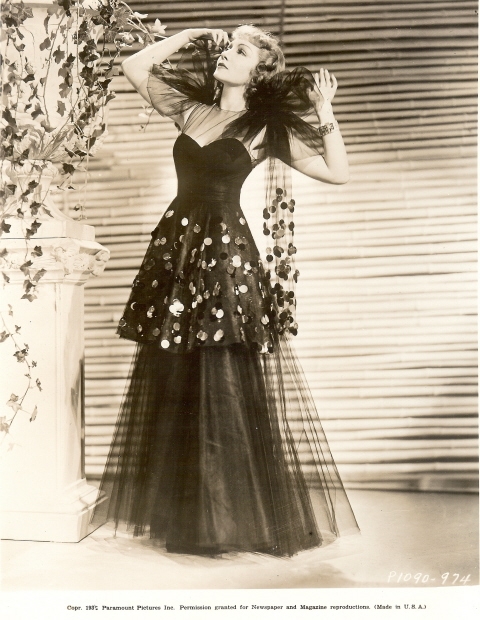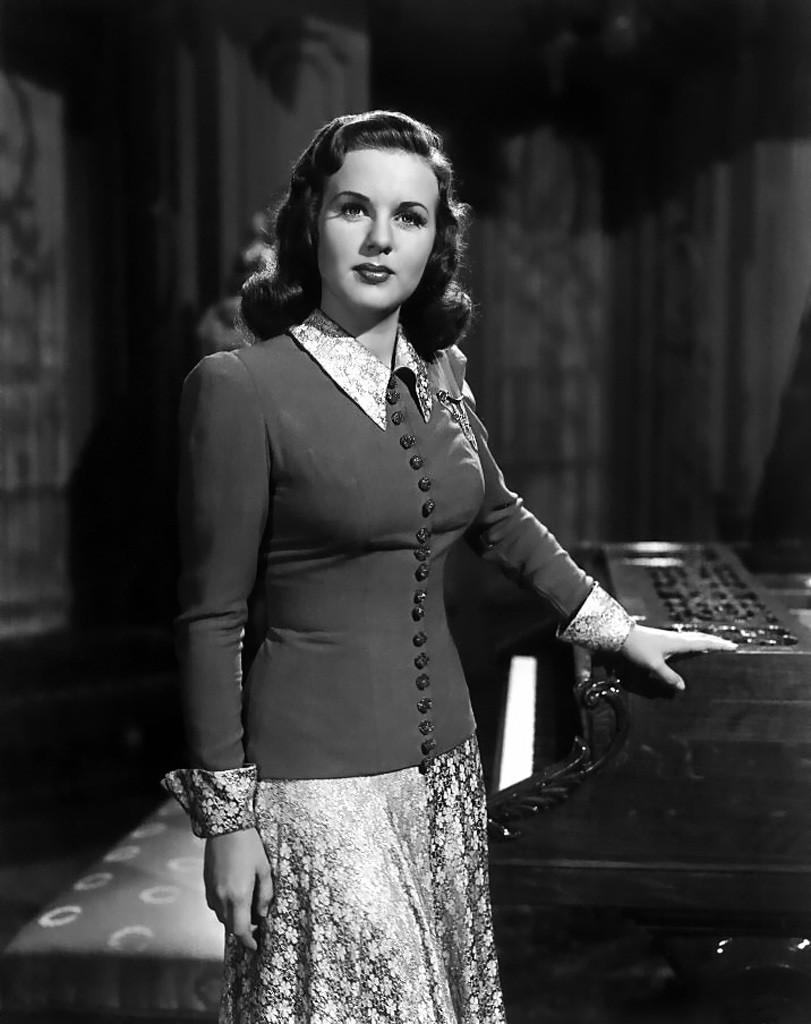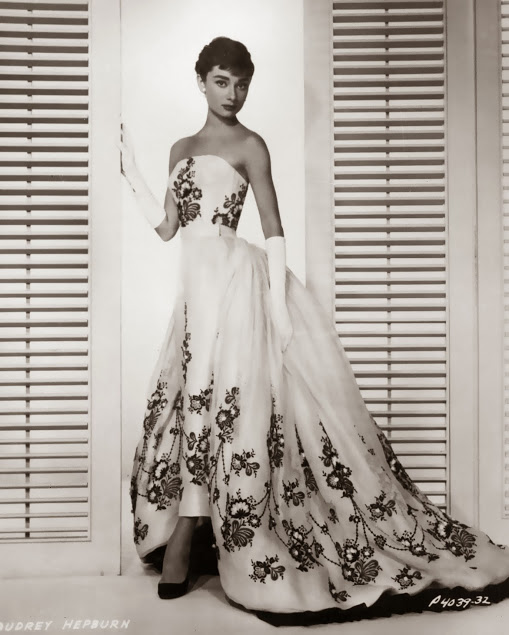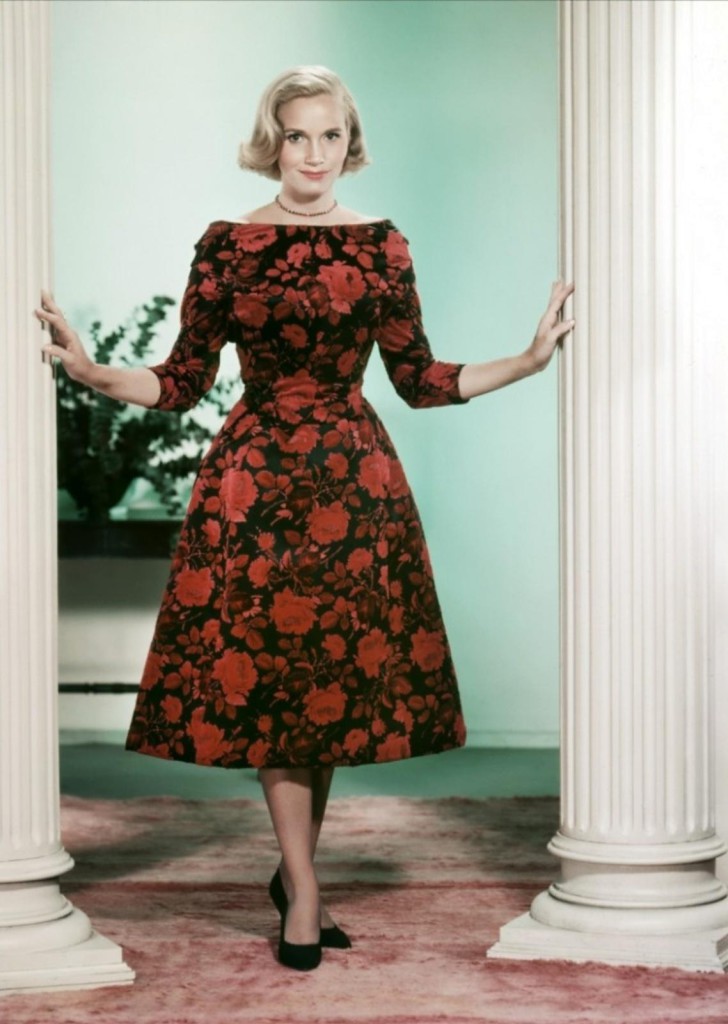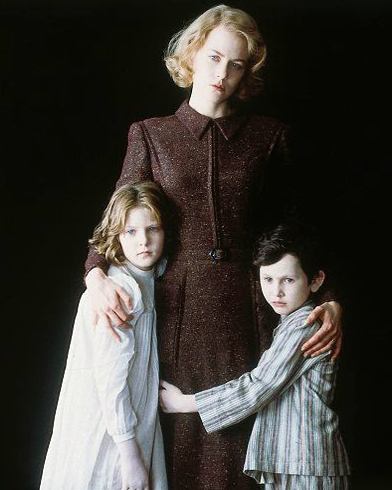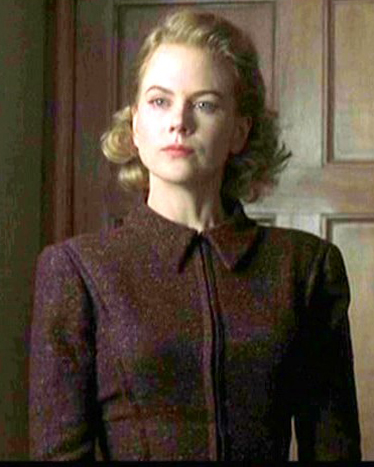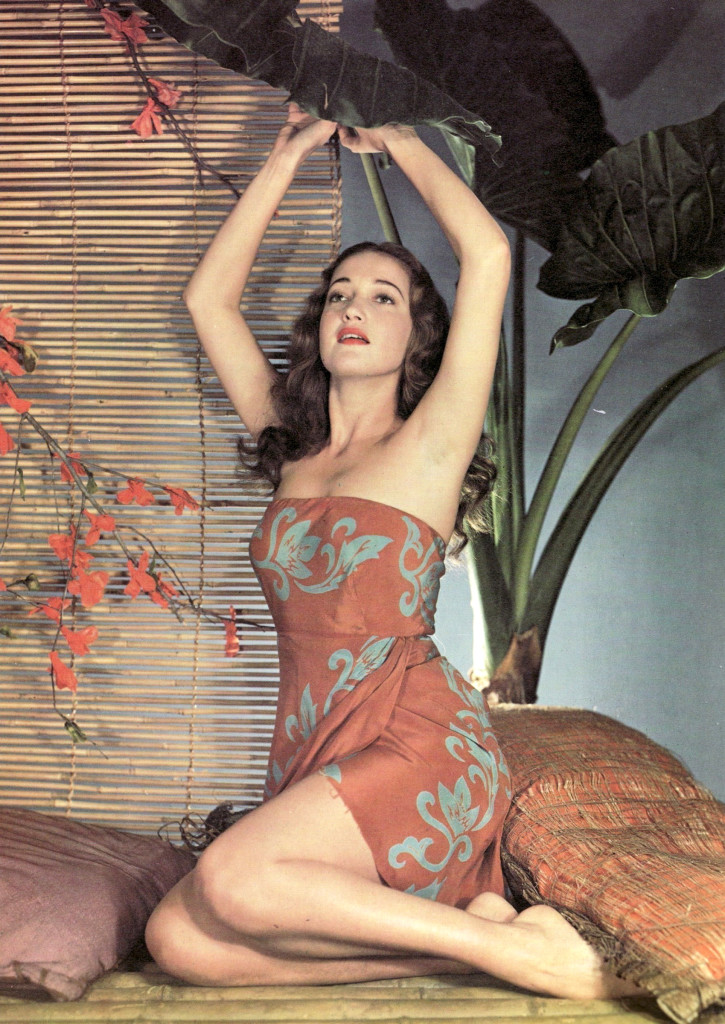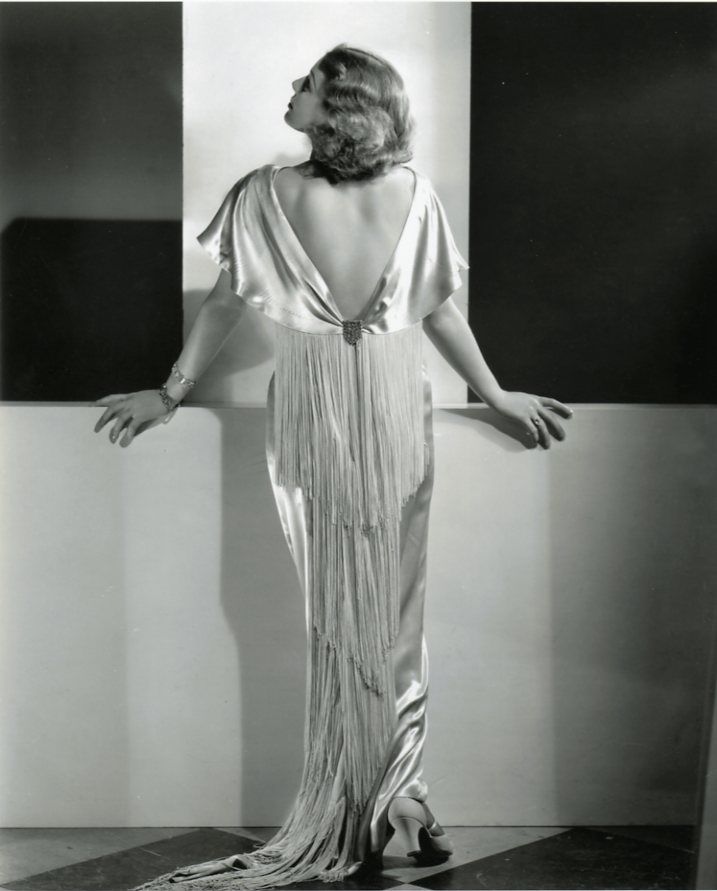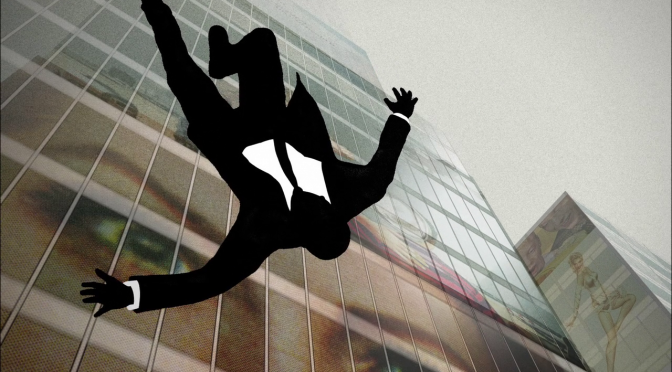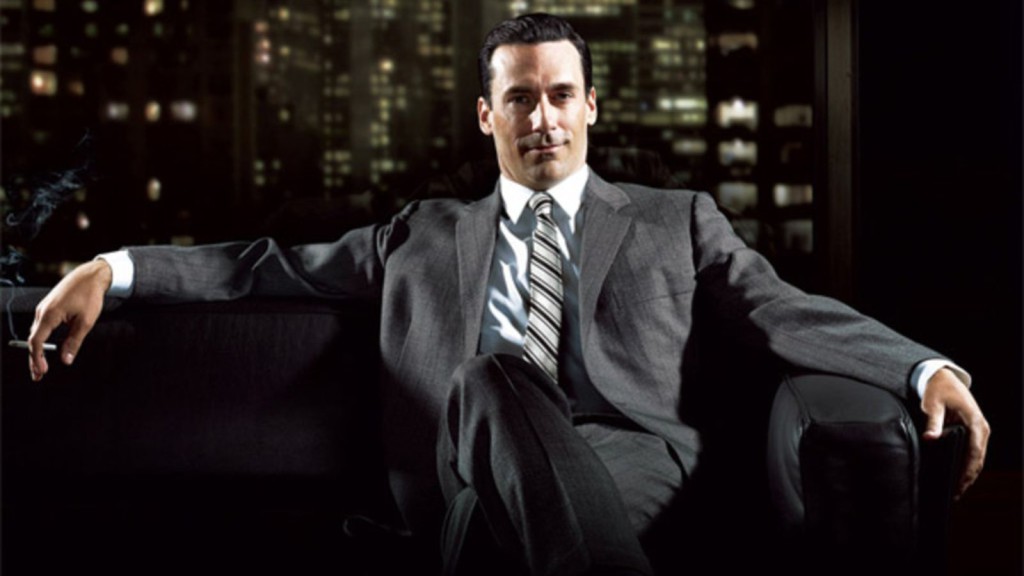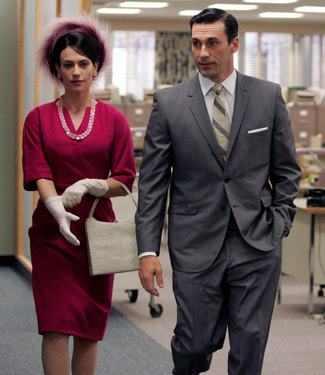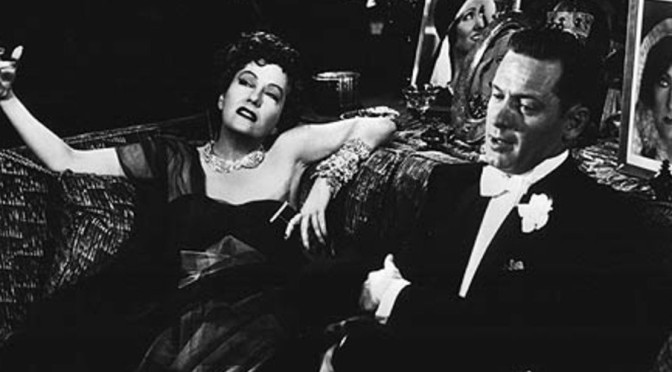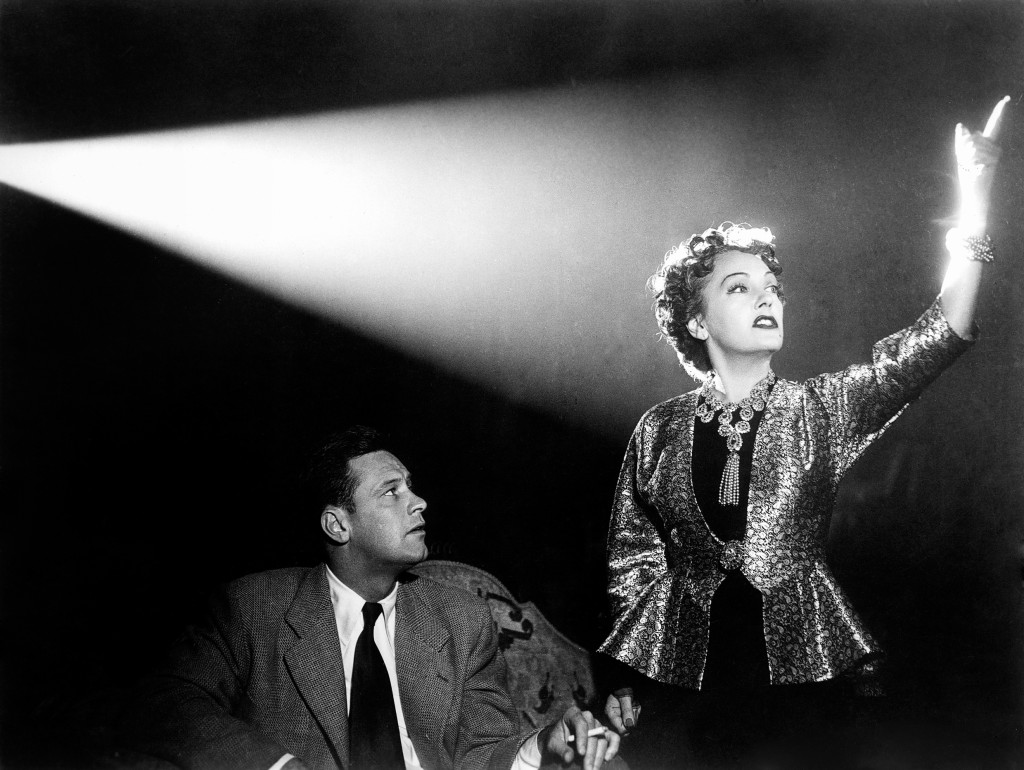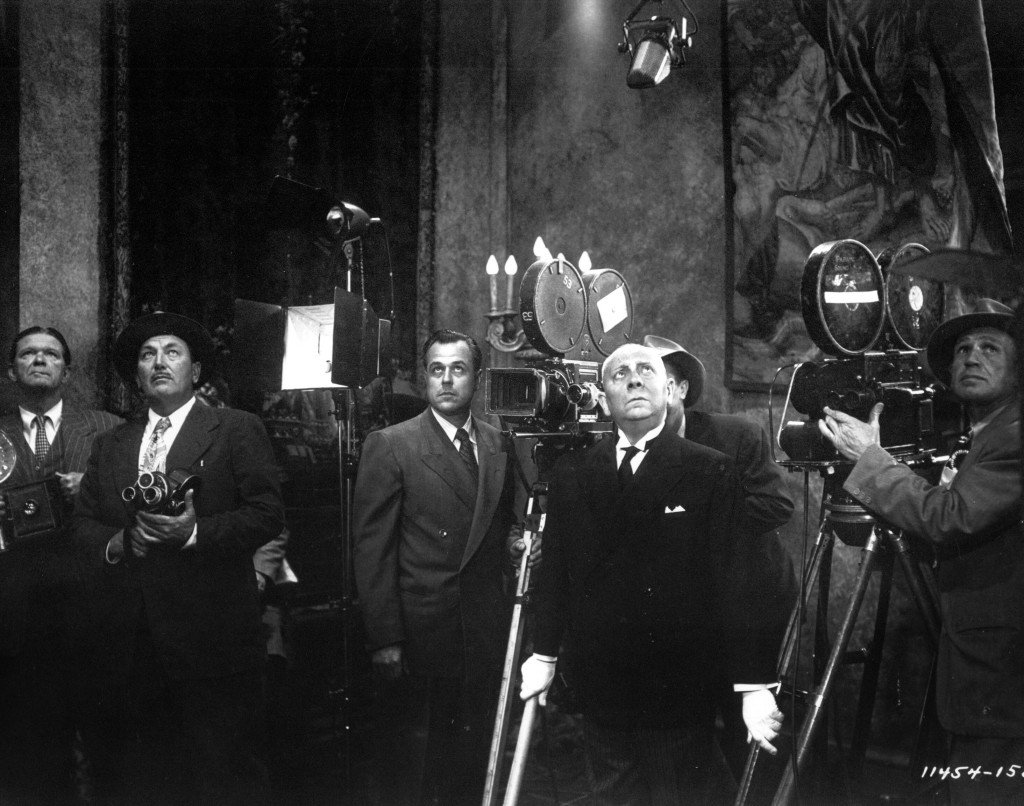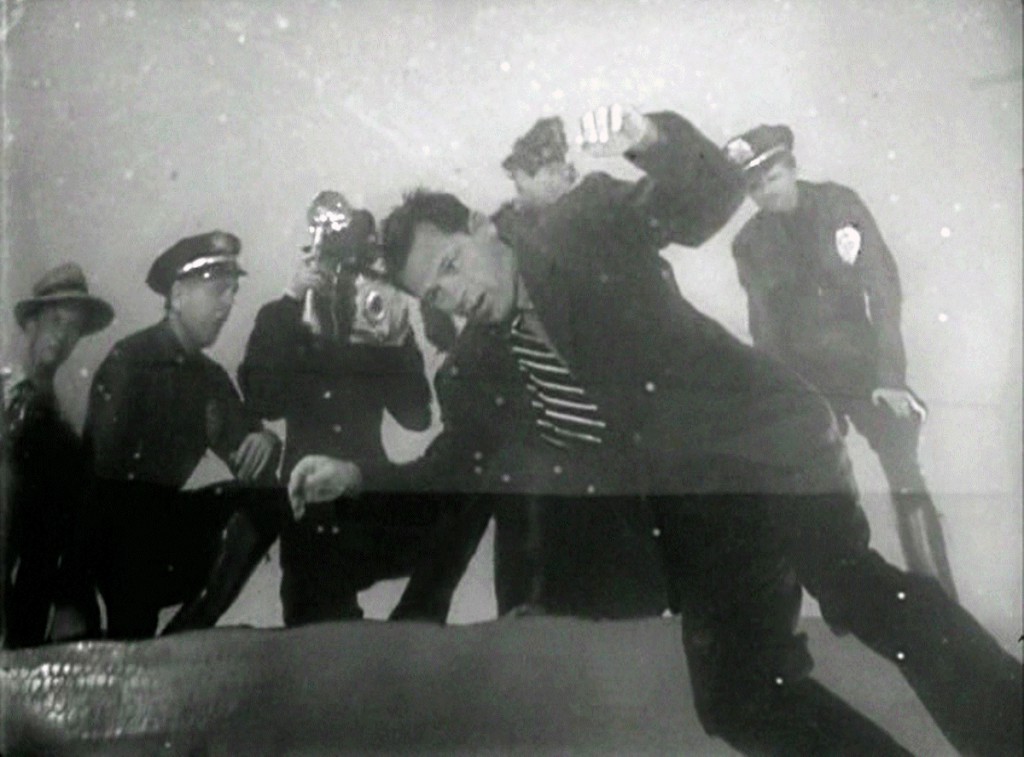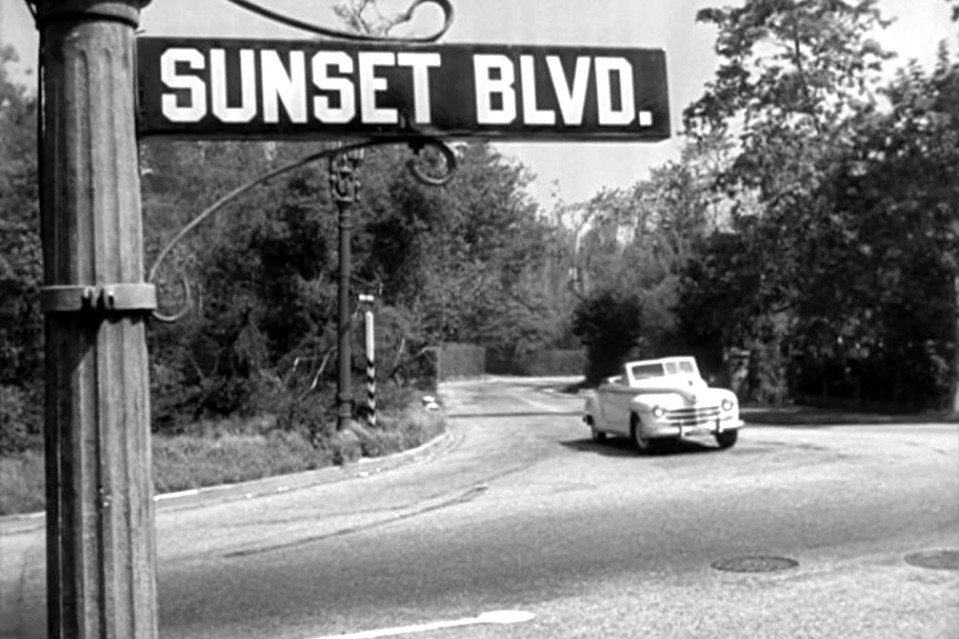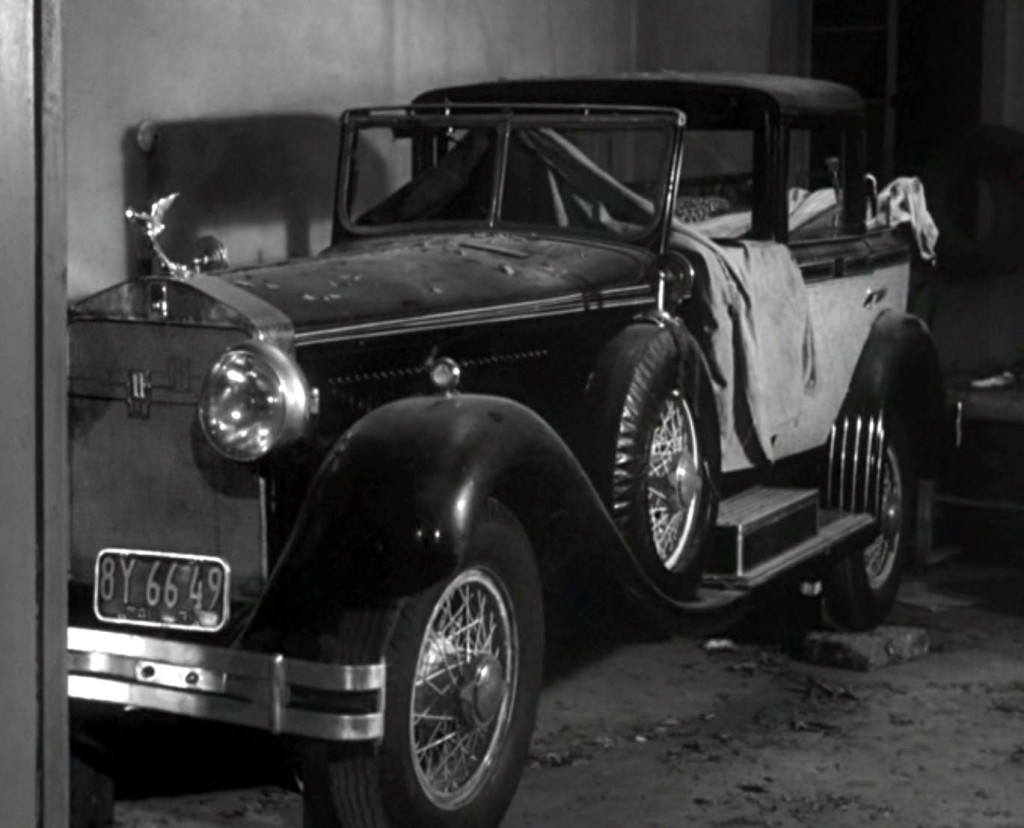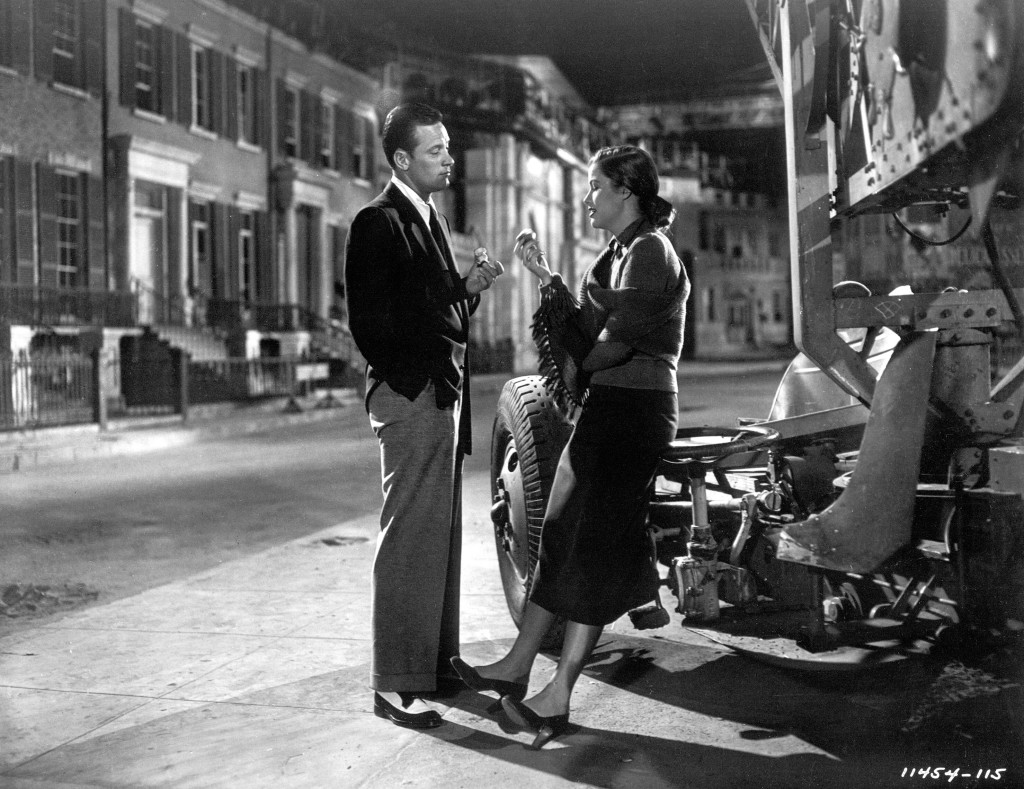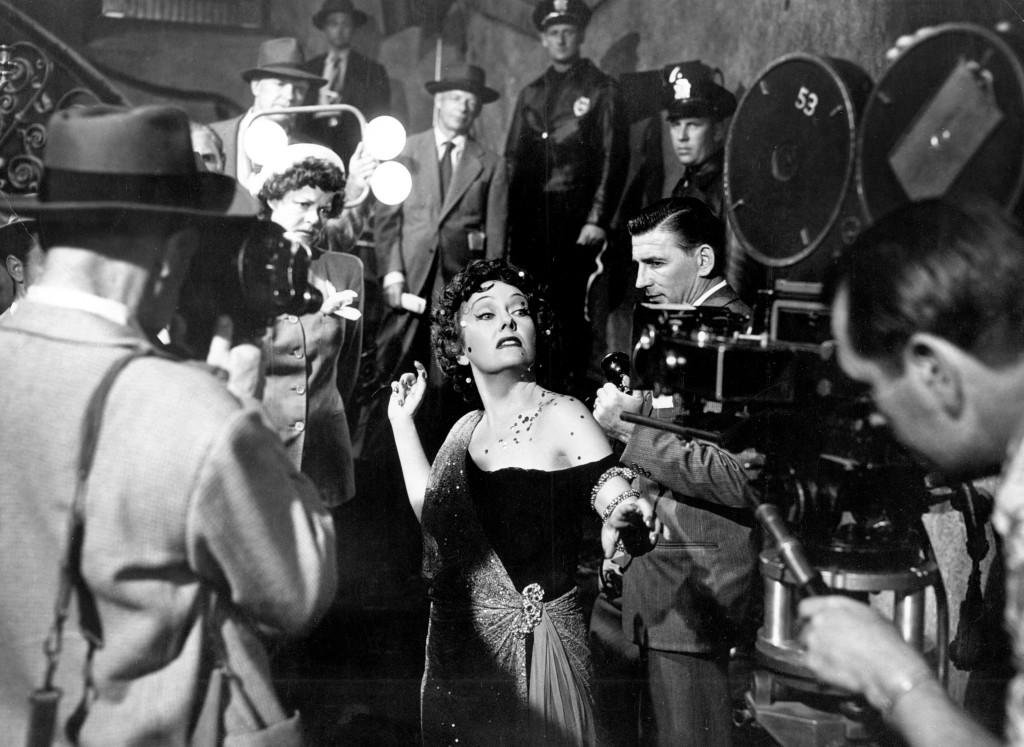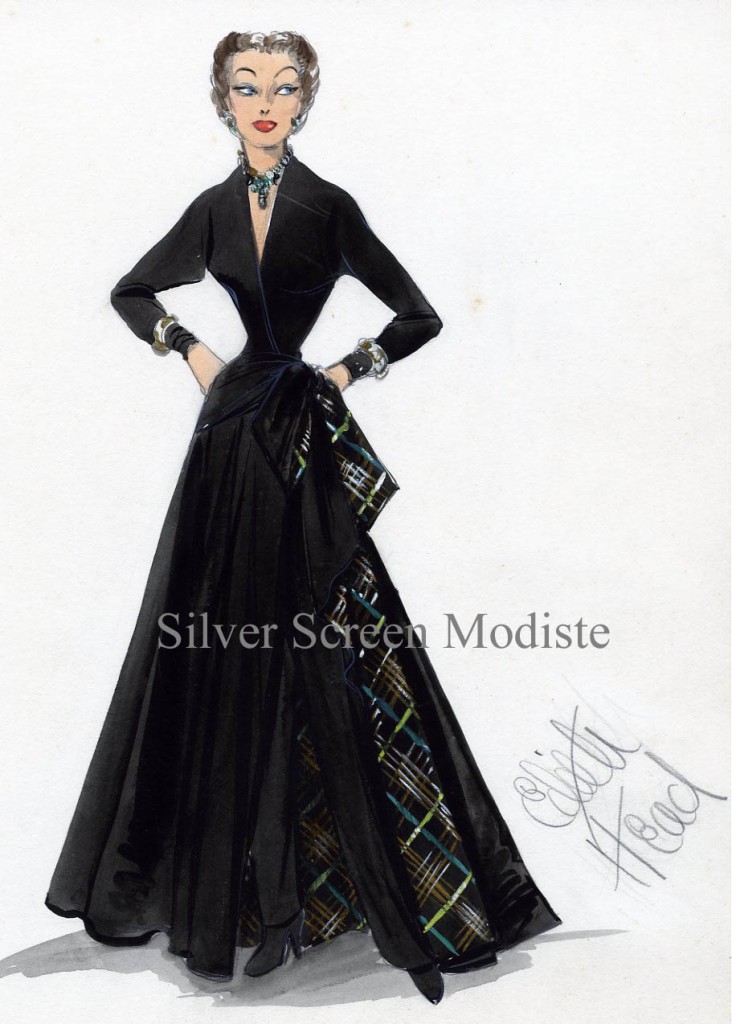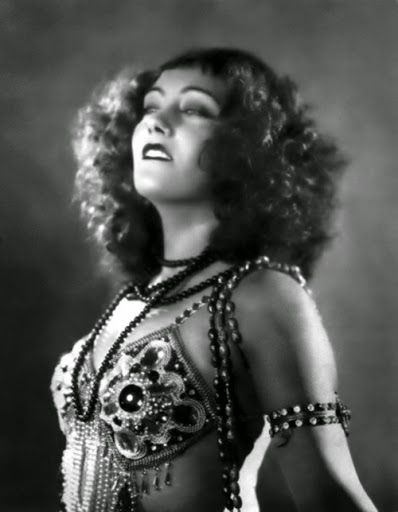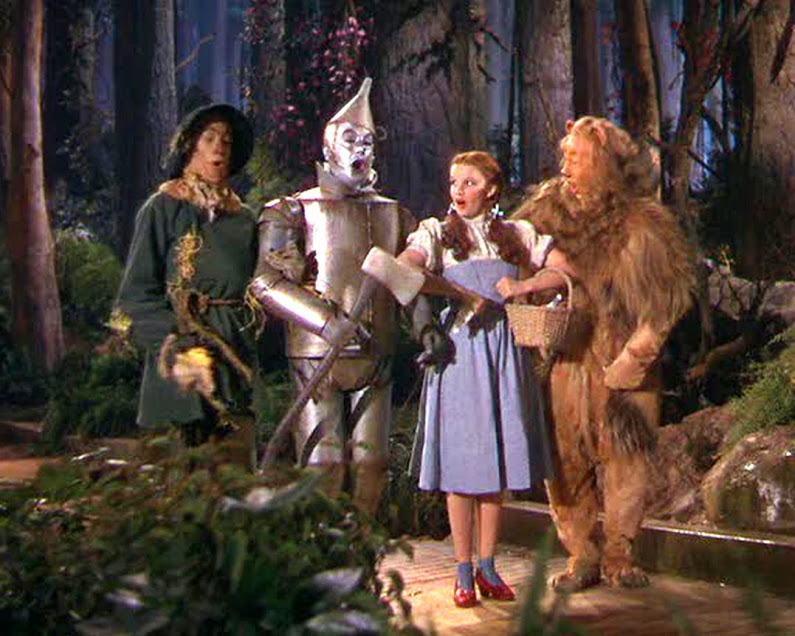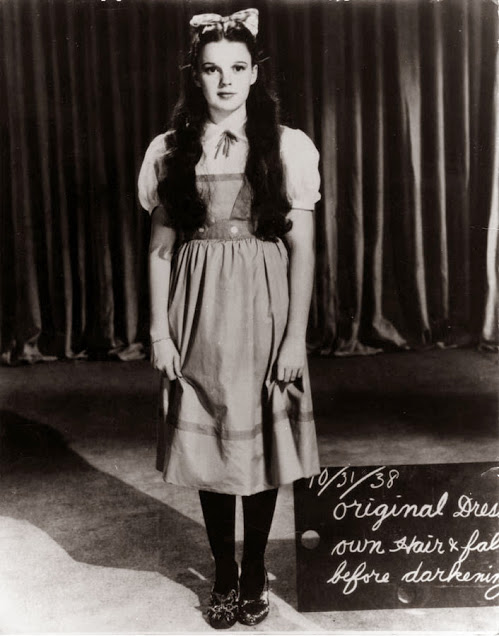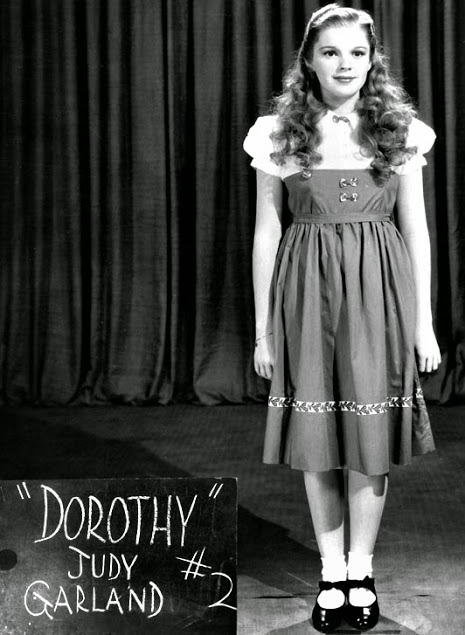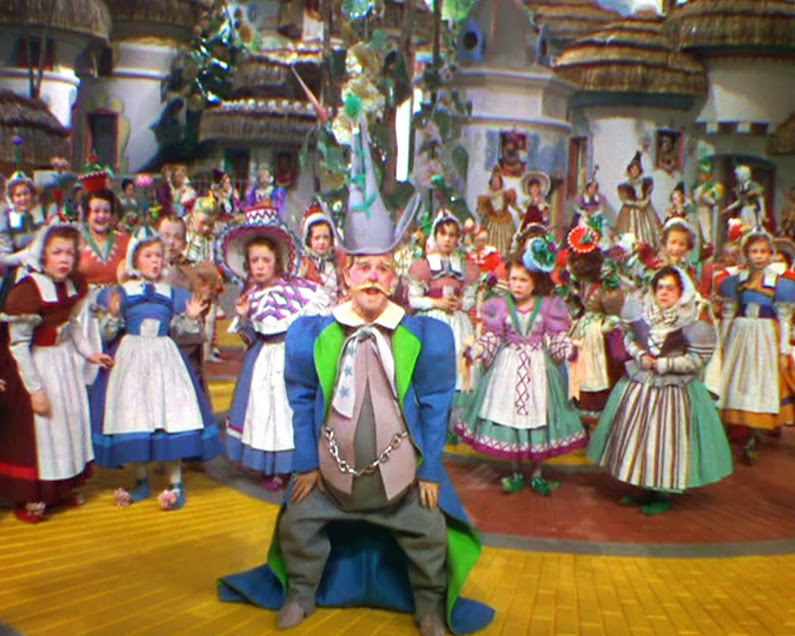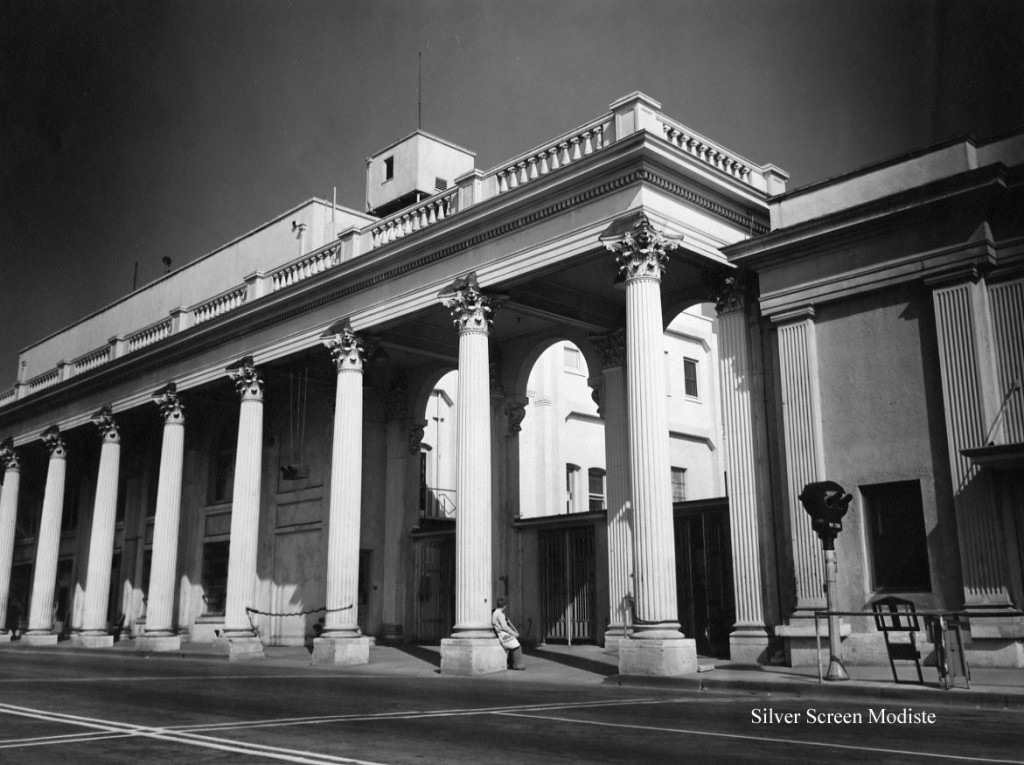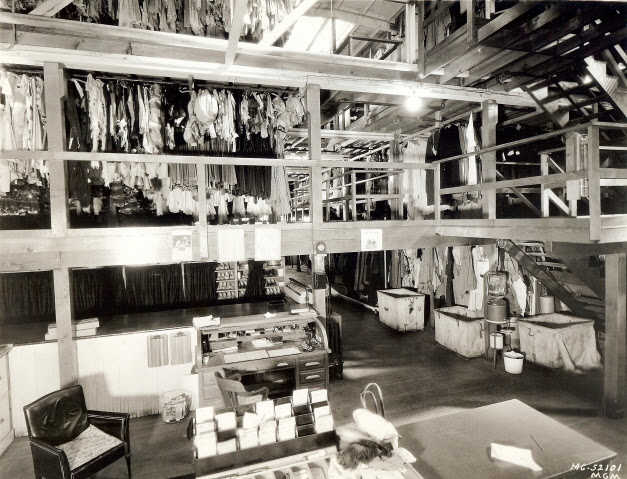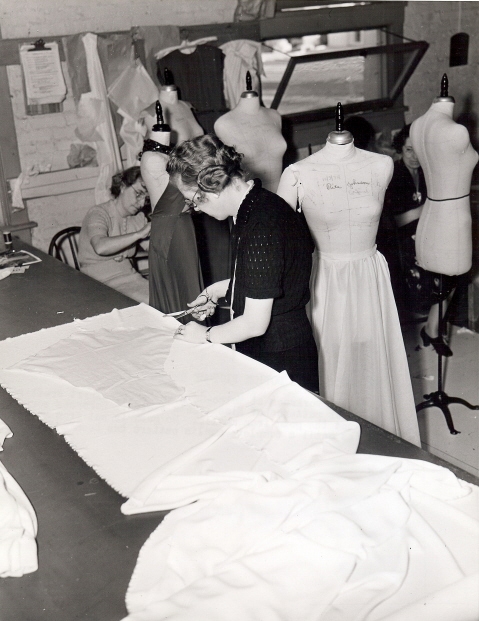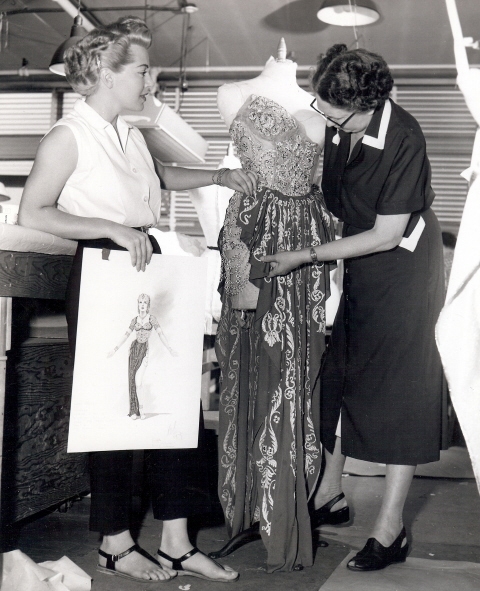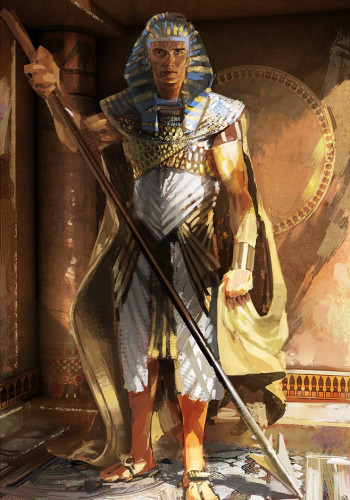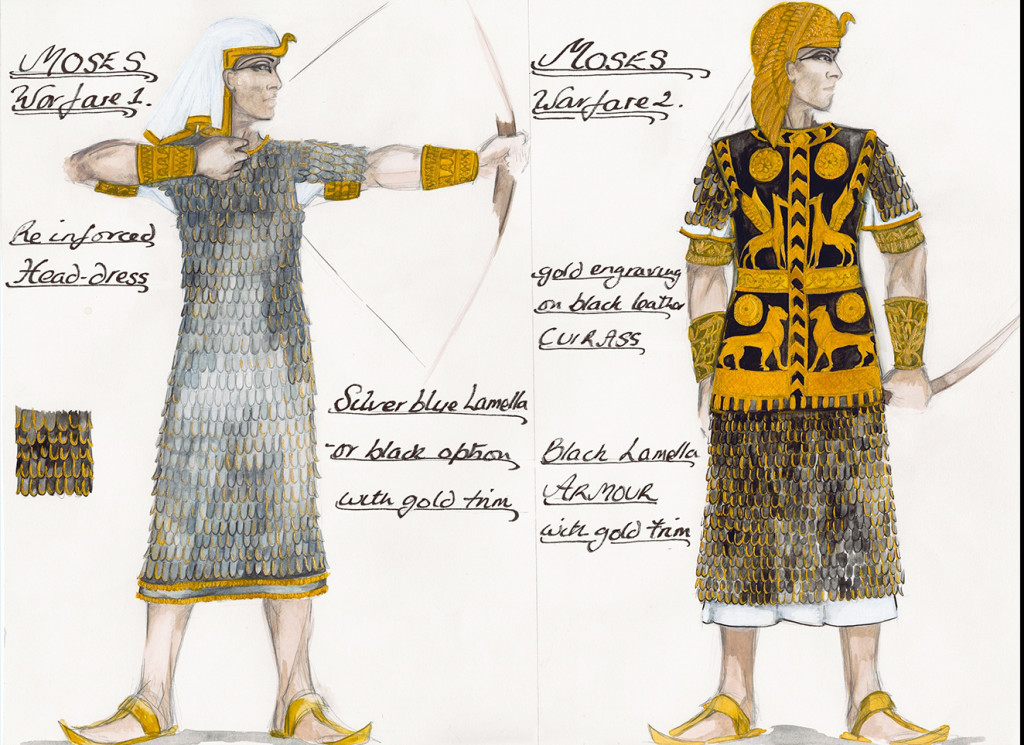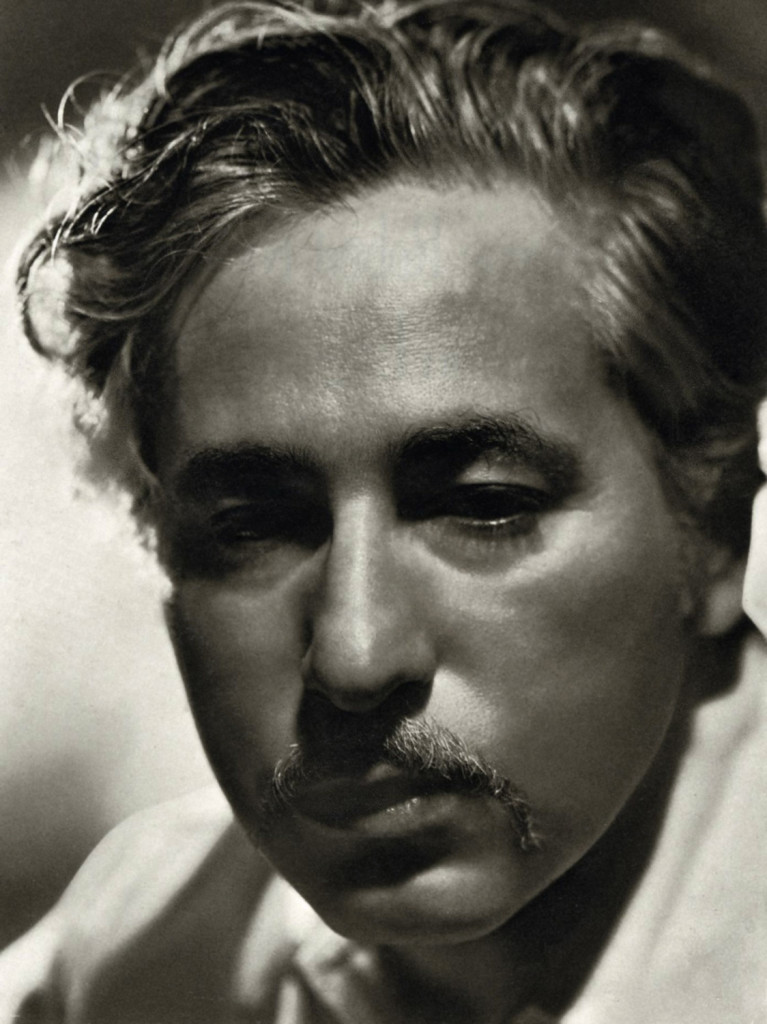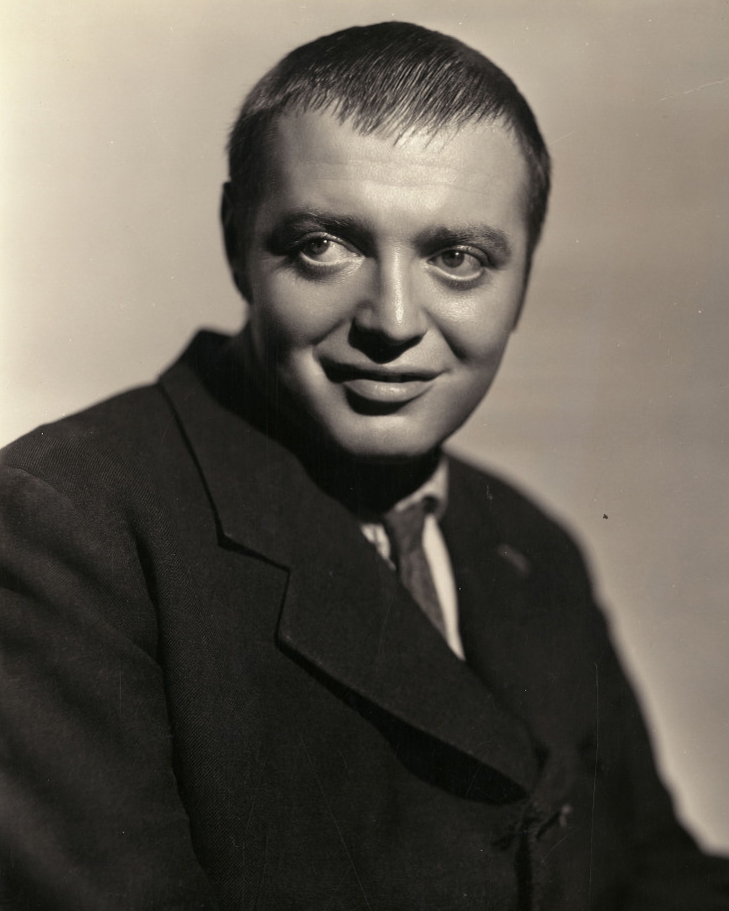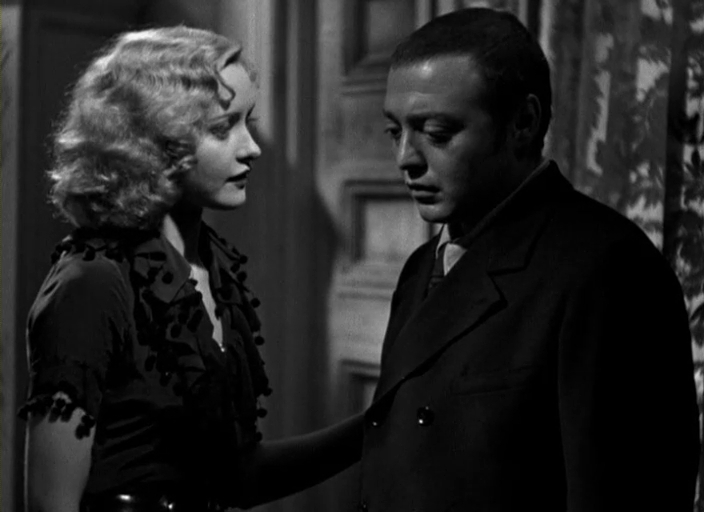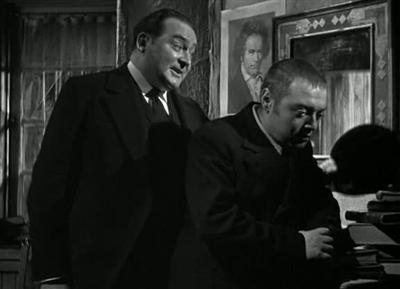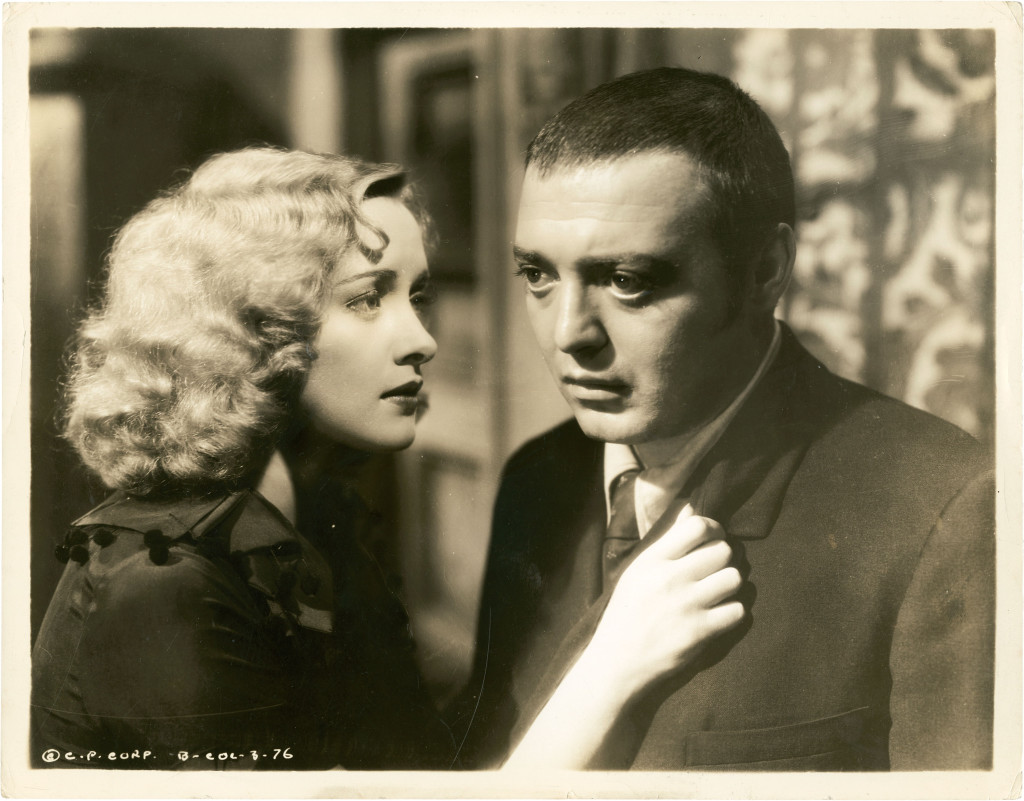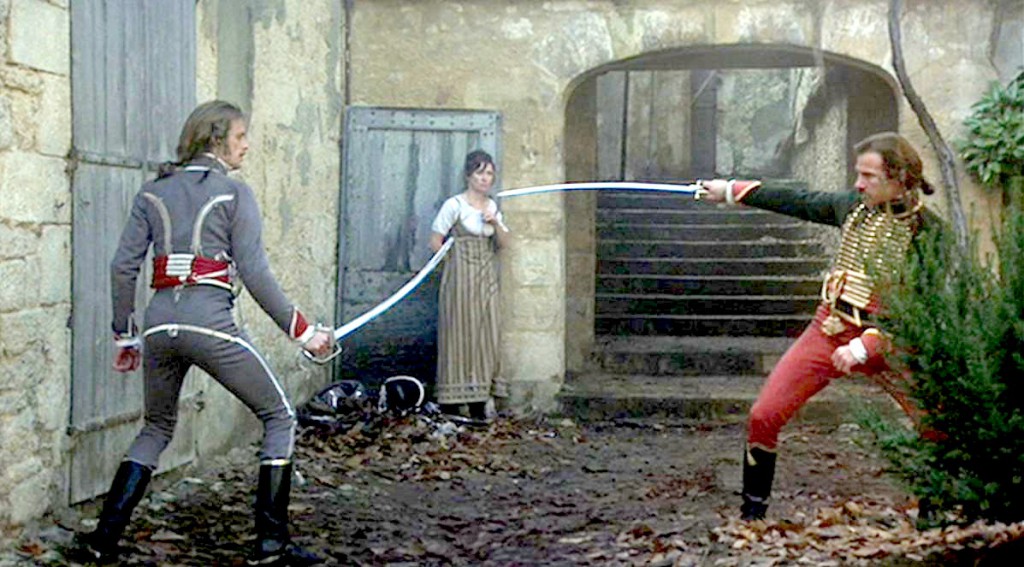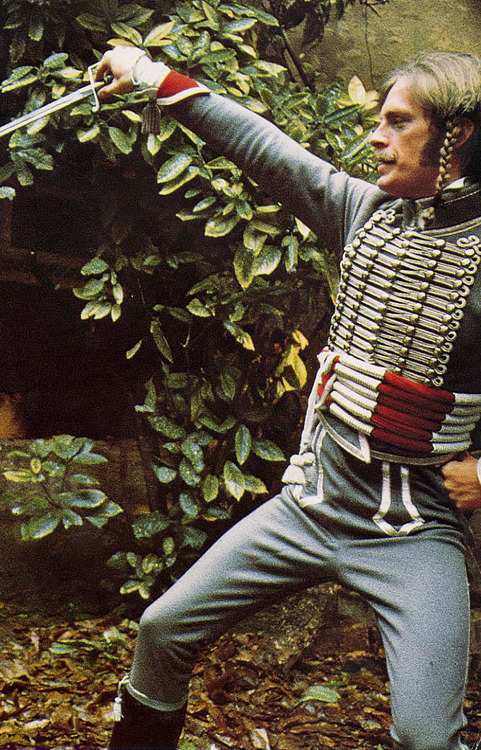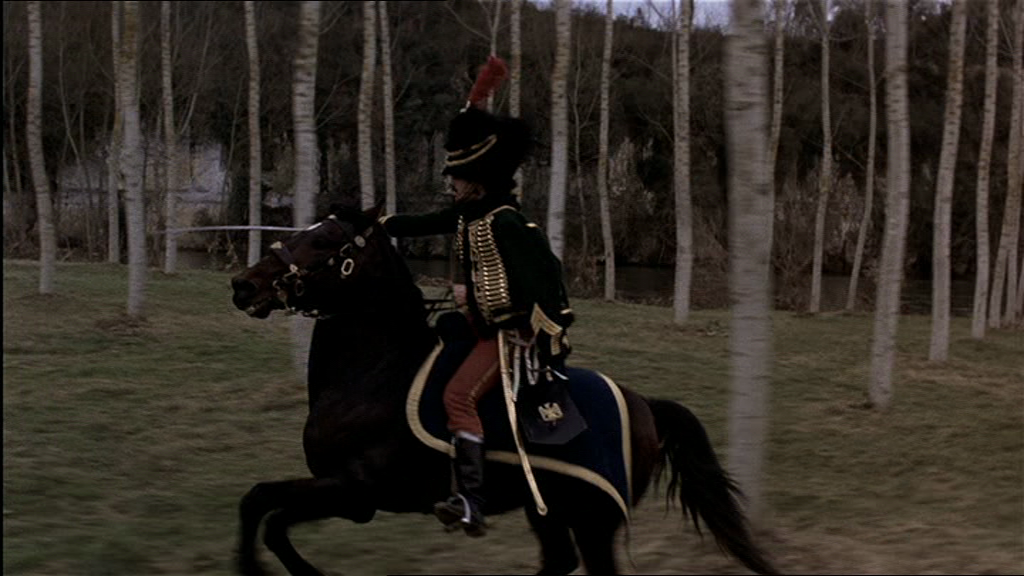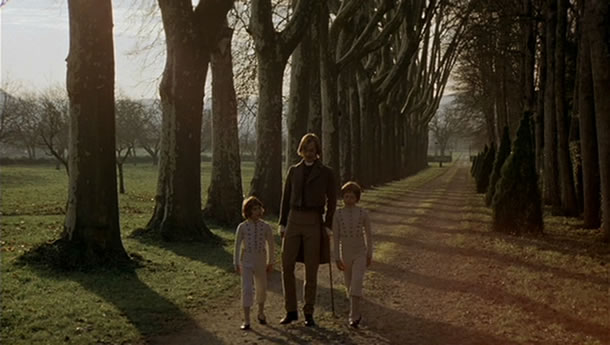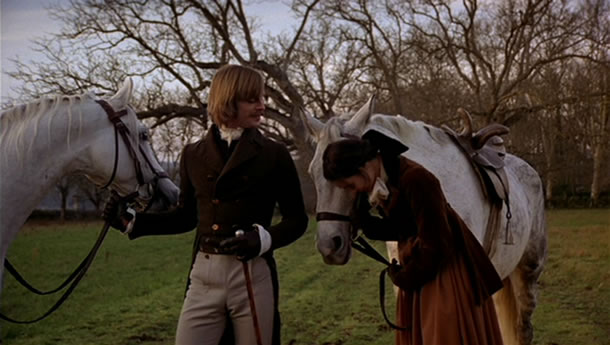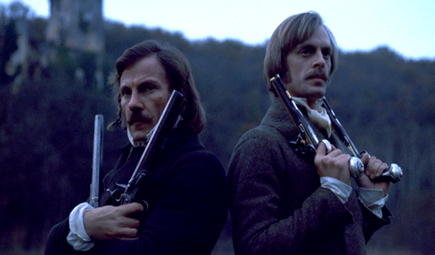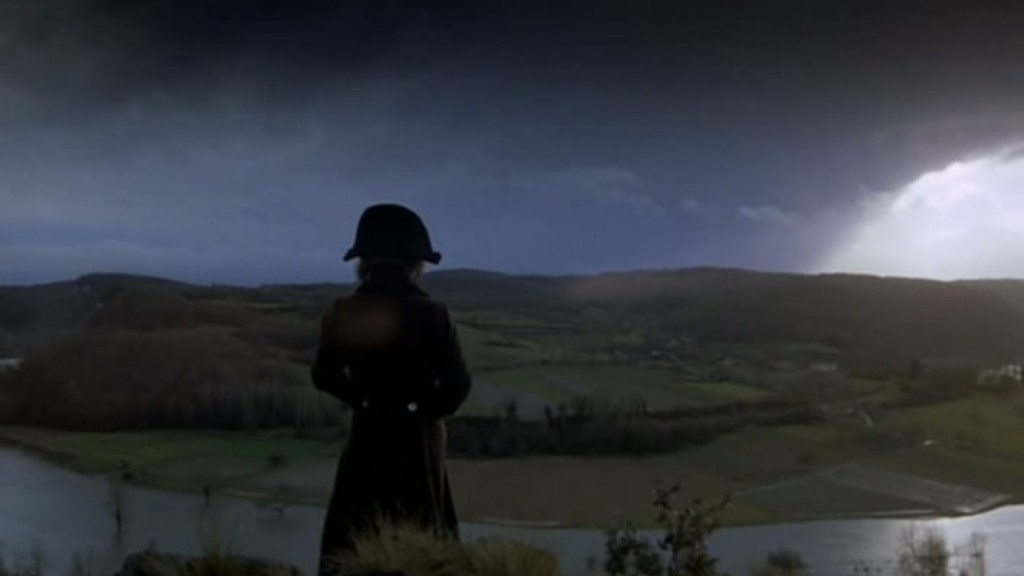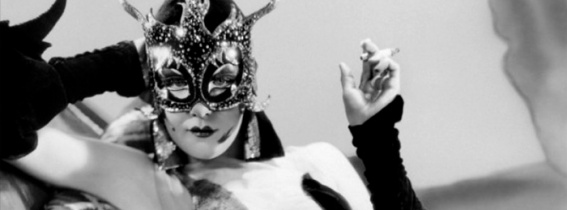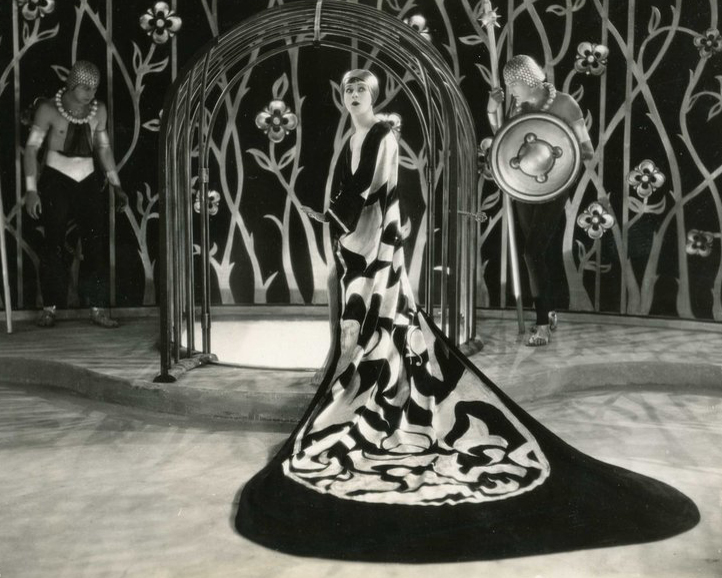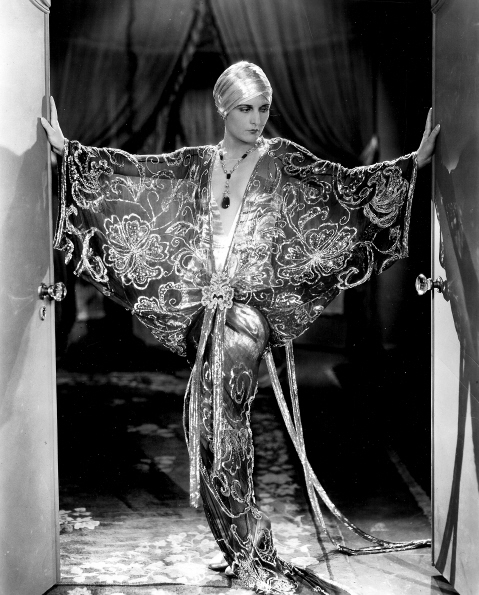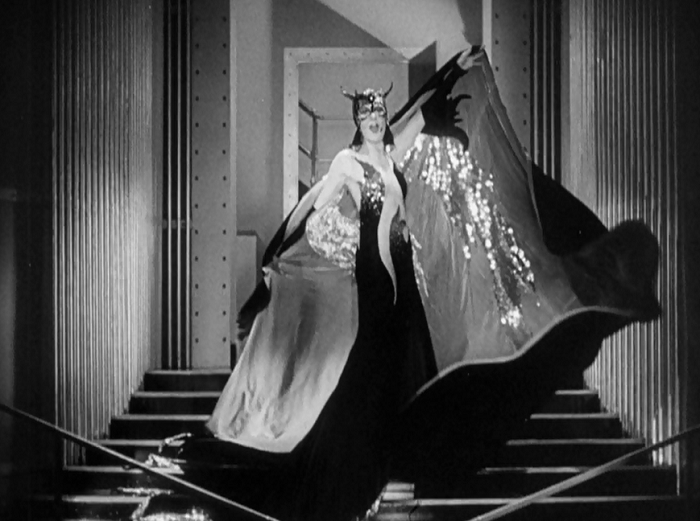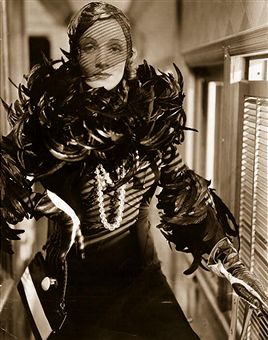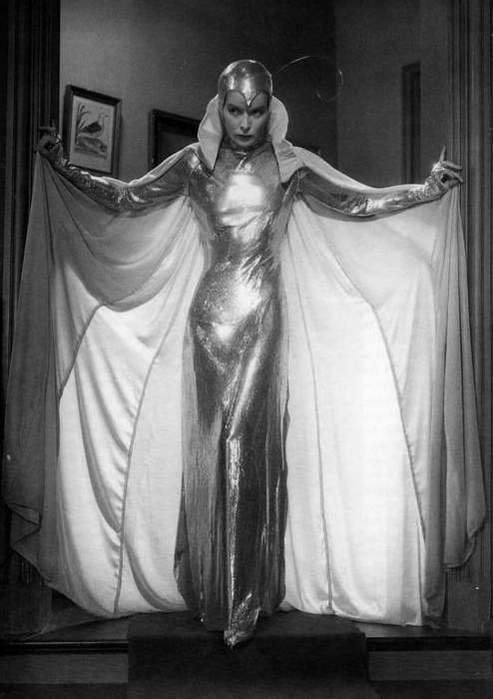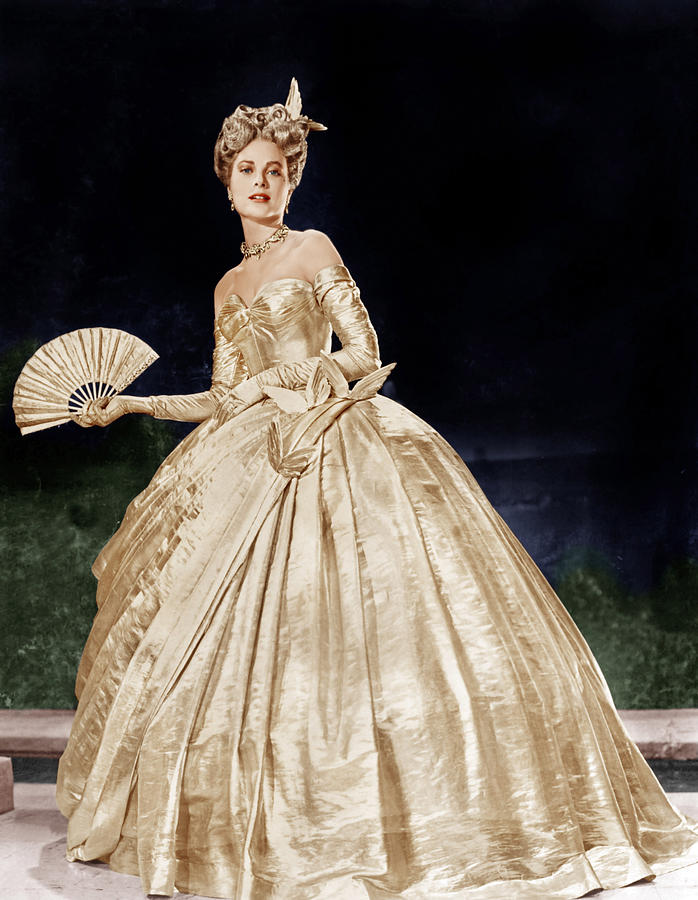For all the times I’ve seen Casablanca – on big screens and small, I never fail to be hooked from the beginning, stirred by the story and its characters, emotionally charged by the singing of The Marseillaise in defiance of the Nazis in Rick’s Cafe Americain, and spellbound during the final scene – still wondering what Ilsa will do. The movie may be number two or number twenty in the all-time list, but it’s the movie I love the most.
This post first appeared in my Silver Screen Modiste blog in February 2013
As with many great films, its backstory is as fascinating as the movie itself, and with Casablanca, its bumpy production is notorious. It started as an un-produced play, Everybody Comes to Rick’s written by Murray Burnett with the assistance of Joan Allison. The story was inspired by the combination of the haunting song As Time Goes By, and Burnett’s 1938 visit to the French Riviera, and a nightclub where an African-American was playing jazz numbers on a piano. This scene was paired with Burnett’s experience seeing the rise of Nazism in Austria and the treatment of its Jews. Indeed, by 1942 when Casablanca’s production started, the U.S. had entered the war and things were going badly in the Pacific. The Nazis had overrun Europe and had invaded North-Africa. Here’s a digest of the film’s story and production.
The Production & Screenplay: Hal Wallis at Warner Brothers produced the film, making it into what it finally became.During the process several writers worked on the screenplay: Julius and Philip Epstein gave it wit and and its quick pace; Howard Koch gave it a political and moral heart, and Casey Robinson deepened it as a love story. Years later Howard Koch said of the film, ” I have almost a mystical feeling about Casablanca. That it made itself somehow.” Regardless, Hal Wallis kept all the screen writers working on it off and on, waiting for ultimate satisfaction. Casablanca is famous for the last minute resolution of how it would end. While the original story and screenplay definitely had Ilsa leaving with Lazlo, there was doubt about this unhappy ending for the film’s lead actor. It didn’t help that script changes kept coming just ahead of each day’s shooting, which was directed by Michael Curtiz. Ingrid Bergman herself wasn’t sure, adding depth to her performance as the uncertain Ilsa. It was Hal Wallis himself that came up with the final line, “Louis, I think this is the beginning of a beautiful friendship.”
The Setting: Casablanca in western Morocco was not just an exotic location in which to set a movie. Its setting was strategic, and central to the plot. As the Nazi machine conquered more and more of Europe, various escape routes previously open for refugees and POWs were now being closed. Conquered France was split in two – the north was directly governed by the Nazis, and the south was ruled by the puppet government located in Vichy (hence the last drink and kicking of the bottle of Vichy spring water by Claude Rains at the end of the film). The old routes of travel were now blocked. The North Atlantic was heavily patrolled by German U-boats. The Mediterranean route from Marseille to Port Said in Egypt was blocked, Italy was an ally of Germany, while Spain was in the hands of a like-minded Fascist dictator. China had already fallen to the Japanese as had most of southeast Asia.
Casablanca and Morocco were part of a French colony now ruled by the Vichy government – essentially under the thumb of the Nazis. Refugees were forced to take the long way around, from Europe and Asia to North Africa. With luck, money, and the right papers, they could go from Morocco to Portugal, and from there set sail to North and South America.
The Actors: Casablanca is blessed with an ensemble cast of iconic proportions. It could also be said that through them the film made itself when such talented actors with such diverse origins came together on the WB sound stage. In this it reflected the film plot itself, the coming together of political refugees, the oppressed, warring parties, itinerant professionals, and opportunists. The two main opponents, Victor Lazlo and Major Strasser, played by Paul Henreid the Austrian and Conrad Veidt the German, had both fled their native countries due to the rise of Nazism. Peter Lorre was also Austrian, born Laszlo Lowenstein and also an exile from the Nazis. His role as Ugarte is short but unforgettable. The masterful Sydney Greenstreet, an Englishman playing Ferrari the rival cafe owner of The Blue Parrot, is memorable in his fez, so much so that he served as the iconic image for Chris Van Allsburg’s first picture book, The Garden of Abdul Gasazi. Then there’s the Hungarian born S.Z. Sakall playing Carl the cafe manager, and the Russian Leonid Kinskey playing the bartender Sasha, and the French-Jewish Marcel Dalio playing the exuberant croupier. Actors from 34 different countries played in Casablanca. But one of them came from very close by: Jack Warner’s adopted step-daughter, the Los Angeles-born Joy Page, who played the Bulgarian newlywed that offered up herself for papers to ensure their escape to freedom.

Of course we have the principal actors – as unlikely to ever fall in love in real life as they were to play ideal paired opposites on screen – Humphrey Bogart and Ingrid Bergman. She has notoriously been quoted as saying she didn’t think this was a great movie and that it wasn’t her best. He was previously noted for his gangster roles, a big stretch now to star as a lover, surprising even him. Neither particularly liked the other on the set. But magic happens on it’s own timetable, and as Bogart said, “Anytime that Ingrid Bergman looks at a man, he has sex appeal.” It was more than just “looking at a man” that Ingrid possessed. Any role she played as a lover showed that incandescent light of love.
And there is Claude Rains, he too an indispensable part of Casablanca, and an indispensable foil to Bogart’s Rick. They are the two halves that make up the whole hero in this film.
And there is also Dooley Wilson who played Sam, “Play it Sam, play ‘As Time Goes By,’ “said Ilsa. What would Casablanca be without his soulful singing of that haunting song.
The Music:The composer for the film’s score was the amazing Max Steiner, yet as wonderful a job as he did in setting the mood for this movie, the film still belongs to two incredible songs: As Time Goes By, music and lyrics by Herman Hupfeld, and La Marseillaise, the French national anthem with music and lyrics by Claude Joseph Rouget de Lisle. It got its name by the fighters from Marseille that sang the song as they marched to fight the opposing armies in the French Revolution. As Time Goes by, a song written for the 1931 Broadway play, Everybody’s Welcome, inspired Murray Burnett to write the play Everybody Comes to Rick’s, which was the basis for the movie.The song is the key to Rick and Ilsa’s past, and it re-introduces their relationship in the present. As for the stirring rendition of La Marseillaise, it serves as the the pivotal point where resistance to the Nazis becomes real for everyone in the movie, symbolized by Yvonne’s (Madeleine LeBeau) turnabout emotional singing of it in Rick’s Cafe.
The Costumes: Orry-Kelly designed the costumes for Casablanca. He was Warner Brothers’ long-time designer, but this was the only time he designed the costumes for Ingrid Bergman. After the beginning of the war, Hollywood costumes became more sober and less glamorous. Orry-Kelly’s designs for Ingrid Bergman perfectly balance a simple but elegant wardrobe. She is dressed up just enough in each scene to draw attention, yet without seeming out of place. In the market scene below she wears a striking black & white striped blouse under a square shouldered white dress. Ingrid Bergman looked fetching in it, enough so that Edith Head used a similarly striped blouse for Ingrid Bergman in Notorious.
The Sets: One quickly forgets that Casablanca was filmed entirely on the back lot and sound stages of the Warner Brothers studio (and the Van Nuys Airport). The sets thoroughly transplant the story to its namesake Casablanca, Morocco. Some of the action takes place during daylight, but the moody and stark black and white photography enhances the moods of the story. The interior of Rick’s is where most of the action happens. Its decor looks realistic, but it is the multi-ethnic extras in the costumes and uniforms of their native lands that adds dimension to the scenes. These scenes actually influenced the bar scene in Star Wars with its various extraterrestrials.
Outside of Rick’s Cafe, searchlights constantly flash through the night, providing an atmosphere where nobody can hide.
The Themes: Casablanca is a love story buffeted by events and destiny. Its triangle of love makes for an unbalanced story, with one side always down. The story travels through time and space, and travel and exile form central themes of the movie. The map of Africa anchors the opening of the film, and travel is served in opposites: leisurely and fun, or panicked and desperate.
Casablanca has elements of Film Noir. Rick is an exile unable to return home or escape his past. He keeps burning his bridges and moving to an uncertain fate. He is both a cynic and a sentimentalist, dispensing judgments and determining others’ fates as his has been determined. His own fate is ambiguous to the end. Ilsa and love could settle on either man, yet she is unable to decide. She leaves it up to Rick, or to fate, to determine the outcome. Their final moments together are poignant. Did he really decide to let her go with the better man? Were his dreams and memories better than the reality they would have to face together? Rick has lost his fight for love, so now he must fight for glory.
Rick will “escape” with Louis, not to flee to the west and freedom, but to turn inward to Africa, to Brazzaville and to join the garrison of Free French fighters. The jaunty line “I think this is the beginning of a beautiful friendship,” spoken by Louis, belies the hardship they would face in any such endeavor. But this is World War II, and the theme of fighting evil is the key to Casablanca.
Casablanca won Oscars for Best Picture, Best Director, and Best Screenplay.
As Time Goes By
A kiss is just a kiss, a sigh is just a sigh.
As time goes by.
Views: 953

